A unique investment philosophy
Nearly four decades of bottom-up fundamental investing.
Asset Value Investors (AVI) has managed the c.£1.1* bn AVI Global Trust since 1985. Our strategy has remained consistent for this period: to buy quality companies held through unconventional structures, trading at a discount. The strategy is global in scope, and we believe that attractive risk-adjusted returns can be earned through detailed research with a long-term mind-set.
The world is filled with challenges and volatility, with a war on European soil and rising interest rates alongside high levels of inflation. Despite the challenging market conditions, we continue to find good investment opportunities.
Our proprietary research process with a focus on mispriced assets that trade at a discount to net asset value enables us to filter through the numerous companies, to distil the market down to a more manageable universe.
AVI’s well-defined, robust investment philosophy helps to guide investment decisions. An emphasis is placed on three key factors:
(1)companies with attrac-

tive assets, where there is potential for growth in value over time; (2) a sumof-the-parts discount to a fair net asset value; and (3) an identifiable catalyst for value realisation. A concentrated high conviction core portfolio of c. 30± investments allows for detailed, in-depth research which forms the cornerstone of our active approach.
Once an investment has been made, we seek to establish a good relation-
ship and actively engage with the managers, board directors and, often, other key shareholders. Our aim is to be a constructive, stable partner and to bring our expertise - garnered over almost four decades of investing in asset backed companies - for the benefit of all. The approach is benchmark-agnostic, with no preference for a particular geography or sector which allows us to seek out the best opportunities anywhere
AGT’s long-term track record bears witness to the success of this approach, with a NAV total return well in excess of its benchmark. We believe that this strategy remains as appealing as ever and continue to find plenty of exciting opportunities in which to deploy the trust’s capital.
• The UK stock market is starting to look increasingly lopsided
• Drug companies under the spotlight after breakthrough with new weight-loss treatment
• CAB Payments IPO could be the trigger to revive UK stock market flotations
• Why the market was spooked by the Bank of England’s super-sized rate hike
• Carnival shares have soared this year but it’s become a rockier ride

• Fidelity China Special Situations shares hit after China reopening stutters
New: Shell / VT Gravis UK Listed Property Fund
Ten Entertainment
The reason why Frasers wants to own stakes in so many retailers
Revealed: the companies which could join the exodus from the UK market
has made investors rich over the years: are the shares worth buying today?

an opportune moment to pounce on private equity trusts?



Editor’sView:DanielCoatsworth
Thereasonwhy Frasers wants to ownstakesinsomanyretailers

StakebuildinginAO,ASOS,Boohooand Currysmightnotbeasoddasitlooks
FTSE100retailgroupFrasers(FRAS)has upitsfingersinmorepiesthanPukkaserves OverataRotherhamUnitedfootballmatch. thepastfewweeks,ithasunveiled investmentsinyetmorelistedretailcompanies. itsBeforeyouthinkithasgonewild,thereismethodin Inmadness. imagerecentyears,Frasershastriedtoshakeoffits business.asa‘pile‘emhigh,sell‘emcheap’typeof MikeAshleyhaspassedtheCEObatonto hisson-in-law,MichaelMurray,whohasfocusedon ledexpandingthegroup’supmarketinterests.Hehas investmentsinmoreluxurystoresandfocused onpremiumproductsundertheFlannelsbrand. group,Whilethathasgivenanewleaseoflifetothe elsewhere.itisimportantnottoforgetitsrootslie Fraserscrackedtheformulaforfilling pricesstoresfromfloortoceilingwithproductsatlow pickingviaSportsDirect,andAshleyspentyears atthebonesoffailedretailerstoaddnewstrandstothegroup.
Heisanexpertatpickingupabargain,beitbuying dealsabusinessonthecheap,strikinggoodproperty orinvestinginunlovedcompaniesforstrategic cangains.Onceagain,itlooksasifAshleyhasdowneda WhileofRedBullandspottednewopportunities. henolongerrunsFrasers,heremainsthe biggestshareholderowningjustover70%ofthe business. theAshleyhaspreviouslyimpliedthathedidnotget luxurygoodssideofFrasers,leavingittoMurray topursue.Instead,hisbreadandbutteraremassmarketretailbusinesses. FraserstakingstakesinAO(AO.)andCurrys (CURY)effectivelyprovidesafootinthedoorfor thetheelectronicssector.Italreadyhadapositionin becomingcomputergamesindustrybyowningGAMEbut amajorshareholderinAOandCurrys shouldgiveFrasersabroaderunderstandingofthe challengesaroundsellingtechhardware. AOisalsoanexpertatmovinggoodsfromAto moreB–somethingincreasinglyimportanttoFrasersas machinespeopleorderbulkyproductssuchasexercise fromSportsDirectandfurnitureviaitsSofa.combusiness. TakingstakesinASOS(ASC)andBoohoo (BOO:AIM) fashionable,makessense.Athleisureisincreasingly buttheproductsinSportsDirectstores aretoosamey.Ifyoudonotlikesecond-tierbrands youincludingSlazenger,Firetrap,PumaandEverlast, areunlikelytowanttokitoutyourwardrobe inSportsDirectshops.However,thereisscopeto forbroadentherangeandmakeitmoreofadestination didAddingshoppers.brandsisthewayforward,justlikeFrasers ASOSwiththepurchaseofJackWillsin2019.Iamsure andBoohoocouldoffersuggestions. businessesDonotexpecttakeovers.Fraserspreferstobuy outofadministrationandnoneofits recentinvesteecompaniesareinseriousfinancial betrouble.Instead,beingamajorshareholdershould boardenoughtogetAshleyanaudiencewiththe valuableofdirectorswherehecanprizeoutallthe informationandfeedthatintoFrasers’ thisownbrainmachine.Itisanexpensivegambletoget worthboardroomaccess,butAshleyclearlythinksitis it. withIamsurprisedhehasnotmadeasimilarmove afootwearretailer,giventheobviouscross-overwithSportsDirect.Isthatnextonthelist?
Frasers has been busy taking stakes in AO, Currys and Boohoo – there is logic to these investments
The retailer continues to seek ways to expand its empire and taking equity stakes should give it access to the people with the best insight into their industries
Feature:UKListings

Revealed:thecompanies whichcouldjointheexodus from the UK market
Three important things in this week’s magazine 1 2 3
Theexchange’sbattletoattractnew companiesandkeepexistingonesis becomingmoreintenseT hereareanincreasingnumberoflarge theirfirmswhicharethinkingaboutchanging mainsharelistingfromtheUK totheUSorelsewhere,raisingfearsLondonislosingitsimportance. seriousThisarticleexplainswhycompaniesaregiving thoughttothisissueandwhomightbenexttopressthebutton. IrishbuildingmaterialsgiantCRH(CRH)isthe US.latestfirmtodecidetomoveitsmainlistingtothe SeptemberItisexpectedtotakeeffectaroundtheendof 2023.ItsUKlistingwillsubsequently willchangefromapremiumtoastandardlisting,andit ThenolongerqualifyforinclusioninFTSEindices. shareholdercompanyreceivedoverwhelming supportfortheplan.TheUS representsaround75%ofitsEBITDA(earnings andbeforeinterest,tax,depreciationandamortisation) operationalitbelievesthemovewillbringcommercial, andacquisitionbenefits. ChiefexecutiveAlbertManifoldsaidtheUS theisexpectedtobeakeydriverofgrowthand listingmarks‘animportantmilestonein ourdevelopmentandwillenableCRHtofully thatparticipateinthesignificantgrowthopportunities Gamblinglieahead.’firmFlutterEntertainment(FLTR)hasreceivedshareholdersupportforasecondaryUS listingwhichmanagementenvisagewillprovide strategicandcapitalmarketbenefitsasitpursues growthinthatcountry. brandFlutter’smarketleadingUSfantasysportsbetting FanDuelisexpectedtoturnaprofitin2023 andhasthescopetobecomethelargestdivision withinthegroupincomingyearsgiventhegrowth
opportunity.Fluttertoyedwiththeideaoffloating FanDuelonNasdaqin2021. primaryIntimeFluttermaydecidetomakeNewYorkits Plumbing,listingandLondonitssecondarylisting. heating,andairconditioningsolutions groupFerguson(FERG) formerlyknownas Wolseley,addedasecondaryUSlistingin2021 inbeforemakingNewYorkitsprimarylistingvenue The2022.companybeganthinkingaboutaUSlisting ain2019afteractivistinvestorNelsonPeltztook Northstakeandpushedforthegrouptofocusonits Americanbusiness.

Timesthatmovingtheprimarylistingvenue hadachievedmostofitsgoalsandfacilitated managementtospeakwitha‘verylargepoolof capital’forlittleextracost.

ChiefexecutiveKevinMurphytoldtheFinancial
WHYDOCOMPANIESMOVETHEIRLISTING? theThereareseveralgoodreasonscompaniesmake move,buttopofthelist,andwhatconnects allthemovesseensofar,isthesheeramountof businessthesefirmsalreadydointheUS.
Quite a few UK-listed companies are looking to the US market to boost their valuation, but there is no guarantee that value uplift will happen
We look at the likely candidates to focus on the US market and what investors need to do if the listings change
Visit our website for more articles
Did you know that we publish daily news stories on our website as bonus content? These articles do not appear in the magazine so make sure you keep abreast of market activities by visiting our website on a regular basis.
Over the past week we’ve written a variety of news stories online that do not appear in this magazine, including:
whileGainsareconcentratedinafewsectors lossesarewidelyspread
UKofinvestorswillbewellaware thelopsidedperformancerecentoftheUSstockmarketin months,witha handfulofstocksaccountingforalmostthe entireindexgainssofarthisyear. However,asimilarphenomenonis ofoccurringrightunderournoseswithmost thegainsintheFTSE100andFTSE250 downtotheoutperformanceofsomeof theirlargerstocks. obscureThisconcentrationonaselectfewtendstowhatisgoingonfurtherdowntheindices,
toTheUKstockmarketisstarting lookincreasinglylopsided
ExamplesofUKstockstrading around12-monthshare-pricelows
Table:Sharesmagazine•Source:Stockopedia,26June2023
anditwaswithsomesurprisethatwerecently counted90stockstradingatorwithin3%oftheir 12-monthlows. upJustoverhalfofthestocksintheFTSE100are marketthisyear,withgainsbeingledbythosewith capsover£10billionlikeAssociatedBritish Foods(ABF)up24%,Flutter(FLTR)up36%, HSBC(HSBA)up22%,Rolls-Royce(RR.)up 67%and3i(III)up41%. IntheFTSE250,lessthan100stocks withorathirdoftheindexareintheblack gainsmostnotableinAstonMartin Lagonda(AML)up135%,Carnival(CCL)up
75%,Marks&Spencer(MKS)up52%,EasyJet
Large-capstockssuchas
(EZJ)up47%andMitchells&Butler(MAB),also up47%. outperformanceInthemiddleofacost-of-livingcrisis,theofagroupofstockswhichdependifonconsumerspendingseemscounter-intuitive notdownrightbizarre.Atthesametime,the market’sdislikeofothersectorsseemstobejustasTakeextreme. infrastructurerealestateinvestmenttrustsandtrusts,whicharebeingputthroughthethewringerasUKbaseratesrise,whichhas theirmechanicaleffectofloweringthevalueof risingassetseventhoughmostarereporting Outearnings.of90stockstradingatorneartheiryear-lows thereare20REITsandadozeninfrastructuretrusts, including3iInfrastructure(3IN)whichisaholding forbigbrother3i,oneoftheFTSE’sbestperformers. outRenewableenergyinfrastructureisparticularly offavour,yetsoarehalfadozensmalleroiland gasproducers,butthelistisn’trestrictedtothe bottomendofthemarket.
AngloAmerican(AAL) Diageo(DGE) Mondi(MNDI)andVodafone(VOD)Angloarealltradingatorcloseto12-monthlows,with AmericanandMondiofferingmid-singledigityieldsandVodafoneapproachinga10%yield. quoteAsBenGrahamputit,MrMarketwillhappily pricesalldaylongwithoutmakinganysense thehalfofthetimesoit’suptoinvestorstoworkout realvalueofthesecompanies.[IC]
There is an alarming number of UK stocks trading near to 12-month lows, showing the market to be as lopsided as the US
While names like Aston Martin might have doubled this year, the UK market has plenty of well-known stocks struggling to make headway

fall back: analysts question why Amazon would make a bid
Ocado

To be ahead in Asia, be on the ground.
abrdn Asian Investment Trusts
In Asia, life and business move fast. To invest here successfully, you need local knowledge. abrdn has had investment teams in Asia for almost 40 years. So we get to know markets, companies, trends and innovations first hand. And you get to select from investment trusts featuring the most compelling Asia opportunities we can find.

To harness the full potential of Asia, explore our Asian investment trusts on our website. Please remember, the value of shares and the income from them can go down as well as up and you may get back less than the amount invested. Asian funds invest in emerging markets which may carry more risk than developed markets.
Request a brochure: 0808 500 4000 invtrusts.co.uk/asia
Issued by abrdn Investments Limited, registered in Scotland (SC108419) at 10 Queen’s Terrace, Aberdeen, AB10 1XL, authorised and regulated in the UK by the Financial Conduct Authority. Please quote Q231.
The UK stock market is starting to look increasingly lopsided
and it was with some surprise that we recently counted 90 stocks trading at or within 3% of their 12-month lows.
UKinvestors will be well aware of the lopsided performance of the US stock market in recent months, with a handful of stocks accounting for almost the entire index gains so far this year.
However, a similar phenomenon is occurring right under our noses with most of the gains in the FTSE 100 and FTSE 250 down to the outperformance of some of their larger stocks.
This concentration on a select few tends to obscure what is going on further down the indices,
Examples of UK stocks trading around 12-month share-price lows
Just over half of the stocks in the FTSE 100 are up this year, with gains being led by those with market caps over £10 billion like Associated British Foods (ABF) up 24%, Flutter (FLTR) up 36%, HSBC (HSBA) up 22%, Rolls-Royce (RR.) up 67% and 3i (III) up 41%.
In the FTSE 250, less than 100 stocks or a third of the index are in the black with gains most notable in Aston Martin Lagonda (AML) up 135%, Carnival (CCL) up 75%, Marks & Spencer (MKS) up 52%, EasyJet (EZJ) up 47% and Mitchells & Butler (MAB), also up 47%.
In the middle of a cost-of-living crisis, the outperformance of a group of stocks which depend on consumer spending seems counter-intuitive if not downright bizarre. At the same time, the market’s dislike of other sectors seems to be just as extreme.
Take real estate investment trusts and infrastructure trusts, which are being put through the wringer as UK base rates rise, which has the mechanical effect of lowering the value of their assets even though most are reporting rising earnings.

Out of 90 stocks trading at or near their year-lows there are 20 REITs and a dozen infrastructure trusts, including 3i Infrastructure (3IN) which is a holding for big brother 3i, one of the FTSE’s best performers.
Renewable energy infrastructure is particularly out of favour, yet so are half a dozen smaller oil and gas producers, but the list isn’t restricted to the bottom end of the market.
Large-cap stocks such as Anglo American (AAL), Diageo (DGE), Mondi (MNDI) and Vodafone (VOD) are all trading at or close to 12-month lows, with Anglo American and Mondi offering mid-singledigit yields and Vodafone approaching a 10% yield.
As Ben Graham put it, Mr Market will happily quote prices all day long without making any sense half of the time so it’s up to investors to work out the real value of these companies. [IC]
Gains are concentrated in a few sectors while losses are widely spread
Drug companies under the spotlight after breakthrough with new weight-loss treatment
awaiting regulatory approval for obesity, induced an average 22.5% body weight loss in clinical trials.
The obesity drugs market could be worth over $100 billion annually by the end of the decade according to industry experts as pharmaceutical companies race to find treatments for one of the fastest growing world health problems.
On 23 June, family-owned German company Boehringer Ingelheim said participants in a second phase study of one of its treatments, developed with Danish biotech group Zealand Pharma (ZEAL:CPH), lost an average 19% of their body weight.
Although not directly comparable, it is higher than the weight loss achieved in prior studies of market-leading obesity drug Wegovy where participants lost around 15% of their body weight.

Wegovy is made by Danish diabetes specialist Novo Nordisk (NVI:NYSE). Its success in developing an obesity drug has catapulted its shares 3.6 times higher over the last five years as investors eye the huge market potential.
Eli Lilly’s (ELI:NASDAQ) Mounjaro, which is approved for treating type-two diabetes and
High expectations for the company’s obesity and Alzheimer’s drug portfolio have seen the company become the world’s largest pharmaceutical company by market value at $430 billion.
On 26 June, Pfizer (PFE:NYSE) said it was scrapping its once-a-day obesity candidate on concerns of liver safety, causing the shares to fall over 3%. However, chief executive Albert Bourla said the company will continue developing its twice-daily obesity drug Danuglipron which showed similar weight-loss benefits to Wegovy in mid-stage trial results in May.
Demand for obesity drugs has skyrocketed after celebrities advocated using them as well as off-label diabetes drugs to shed weight. Former prime minister Boris Johnson wrote in The Daily Mail he was taking Wegovy but stopped after suffering adverse side effects.
The World Health Organisation estimates obesity rates have tripled since the mid-1970s and a study from Harvard predicts nearly half of Americans will be obese by the end of the decade.
Boehringer Ingelheim’s experimental drug Survodutide mimics glucagon which speeds up a patient’s metabolic rate, increasing how much energy is burned. A quarter of patients pulled out of the trial after experiencing side effects but the company hopes this can be avoided in later trials if the dose is increased more slowly.
In separate news, Boehringer Ingelheim lost an arbitration case where it was seeking to be indemnified by French pharmaceutical company Sanofi (SAN:EPA) in relation to selling heartburn drug Zantac.
GSK (GSK) invented Zantac and is being pursued by claims the drug causes cancer. It settled a class action lawsuit on 23 June comprising around 3,000 cases to avoid distraction related to protracted litigation on the case, giving the shares a 5% boost on the day. [MG]
Several pharmaceutical groups are trying to muscle in on a potentially lucrative market
Harvard predicts nearly half of Americans will be obese by the end of the decade
CAB Payments IPO could be the trigger to revive UK stock market flotations
Business-to-business cross-border payments and foreign exchange fintech sets scene for £851 million London listing
Fintech business CAB Payments has set the price for its upcoming IPO (initial public offering) at 335p per share, implying a market value of £851 million when conditional trading starts on 6 July 2023. It should join the FTSE 250 index later this year based on that valuation.

IPOs in London have slowed to a crawl this year with companies scared off from selling shares to investors amid a catalogue of challenges that have elevated volatility. Earlier in June, Turkey-based industrial WE Soda scrapped its $7.5 billion IPO, blaming ‘extreme investor caution’ in the UK.
According to consultancy EY, just five companies listed shares on the UK stock market in the first
three months of 2023, raising just £81 million from investors.
‘The London IPO market continues to experience the extremely challenging conditions witnessed in 2022,’ said Scott McCubbin of EY in its first quarter report. ‘There remain strong headwinds including the war in Ukraine, high energy and commodity prices, and wider inflationary pressures.’
CAB Payments offers business-to-business crossborder payments and foreign exchange. ‘CAB Payments has a differentiated business model with an attractive economic profile marked by profitability, cash generation and strong margins, and it benefits from structural growth drivers,’ said chief executive Bhairav Trivedi, who used to run Network International (NETW) which recently agreed a £2.2 billion takeover by Canadian investment group Brookfield Asset Management. [SF]
Why the market was spooked by the Bank of England’s super-sized rate hike
UK central bank delivers hawkish surprise in response to sticky inflation
London’s FTSE 100 and FTSE 250 indices both fell on 22 June when the Bank of England raised interest rates by half a percentage point in response to inflation holding firm at 8.7%, as investors worried about the impact of further rate hikes on the UK economy.
The central bank’s decision to raise rates from 4.5% to 5% marked its thirteenth consecutive hike since December 2021 and could exert downward pressure on
house prices at a time when many mortgage holders are already struggling to pay the bills due to the cost-of-living crisis.
Interest rate-sensitive stocks

including banks and housebuilders dipped, the latter cohort on concerns higher rates will cause mortgage market chaos and crimp demand for homes, while sterling and gilt yields seesawed as traders priced in a peak to UK rates of as much as 6% and its implications for recession risk.
Rising mortgage rates, coupled with continuing price rises in goods and services, could act as a sharp brake on the UK economy.
The latest rate hike doesn’t bode particularly well for consumer confidence in the second half of the year, at which point retailers may really start to feel the squeeze. [JC]

Carnival shares have soared this year but it’s become a rockier ride
Demand remains strong but cost pressures are getting worse
Shares in cruise operator Carnival (CCL) are trading 75% higher versus the start of 2023 thanks to strong customer demand for its voyages. Despite the strong rally, the shares have become more volatile in recent sessions after the company guided for lower than expected profit in the current quarter.
The cruise industry has seen a surge in bookings this year from seasoned cruise travellers as well as those who have never tried it before.
Carnival’s secondquarter results on 26 June beat market
forecasts with smaller net losses than expected at $407 million versus guidance of $425 million to $525 million. It generated record second quarter revenue of $4.9 billion and said bookings made during the period reached a new alltime high for all future sailings. Despite this good news, investors focused more on guidance for third quarter profit to come in below previous estimates thanks to rising costs, sending its shares down nearly 14% on the day. The following day saw the stock rebound 9% on the London market. [SG]

Fidelity China Special Situations shares hit after China reopening stutters
Last October, shares in Fidelity China Special Situations (FCSS) started to rally on hopes that a relaxation of Covid restrictions in China would help to lift the economy and benefit the companies in its portfolio. The shares went from circa 178p to 302p over the space of four months.
Since then, nearly all those gains have faded away amid fears the China reopening story was weaker than previously expected. Those fears proved correct, with recent
data showing disappointing tourist spending and weak exports. Add in geopolitical issues such as the country’s fragile relationship with the US and the status of Taiwan, and it is clear why shares in the Fidelity trust are languishing on 10.9% discount to net asset value.
‘The biggest change post-Covid is the outlook for the consumer,’ said portfolio manager Dale Nicholls earlier this month in the trust’s fullyear results. ‘While the recovery is bumpy and varies somewhat by sector,
the path to recovery is clearly there.’ Nicholls said that while growth rates have tempered in the second quarter, he believes the government’s GDP target of 5% for the year looks achievable. ‘This will make China one of the few large economies that will see accelerating economic growth in 2023.’ [JC]
UK UPDATES OVER THE NEXT 7 DAYS
FULL-YEAR RESULTS
July 3: Duke Royalty, Mercia Asset Management.
July 5: Supreme, Redde Northgate, AO World.
July 6: PayPoint, Currys, Jet2, Naked Wines
TRADING ANNOUNCEMENTS
July 3: Sainsbury’s
July 6: Persimmon, Robert Walters
HALF-YEAR RESULTS
June 30: Audioboom, Faron Pharmaceuticals

July 3: Porvair, Kitwave
Investors hope Jet2 results on 6 July will trigger a new share price rally
It will need to show that demand has stayed healthy and cost pressures are easing
Airline and package holidays provider Jet2 (JET2:AIM) is expected to report between £387 million and £395 million pre-tax profit before foreign exchange adjustments on 6 July when it publishes full-year results to 31 March 2023.
The company last updated on trading on 20 April when it came across as upbeat despite flagging cost pressures from fuel, carbon taxes, a higher US dollar and wages. It said pricing for flights and package holidays remained ‘strong’ and margins were ‘encouraging’.
Like many of its rivals, Jet2 has been increasing capacity versus prepandemic levels in a bid to capitalise on more people wanting to get away for a week of sea and sun. It makes higher profit margins when someone books a package holiday and the percentage of departing passengers in this category hit 65.9% at the halfyear stage versus 52.8% in the 2019 comparative period.
Shares in Jet2 started the year well, rising from circa 940p in January to


£13.80 in March, but they have since drifted sideways in a small trading range despite positive messages from the company and the airline industry in general.
Investors appear to be concerned that the ongoing rise in interest rates could deter some people from booking holidays this year. That means a key focus in Jet2’s forthcoming results will be on summer bookings, to see if the rebound in travel demand is sustainable. [SG]
What to expect from Jet2
A consumer boycott of AnheuserBusch Inbev’s (BUD:NYSE) Bud Light brand following a backlash over its social media promotion with transgender influencer Dylan Mulvaney appears to have benefited smaller rival Constellation Brands (STZ:NYSE)
Constellation’s Modelo Especial Mexican lager brand has reaped the rewards from the fallout, having leapfrogged Bud Light to become the top-selling US beer brand for the first time.
Surrendering the top spot must be particularly galling for Budweiser-toStella Artois owner Anheuser-Busch Inbev, since it was forced to divest its Modelo US business to Constellation by the competition authorities following its purchase of a majority holding in Grupo Modelo back in 2013.
Investors will be looking for more colour on Modelo’s market share

gains when Constellation serves up its results for the first quarter ended 31 May before the US markets open on 30 June.
Whereas Anheuser-Busch Inbev’s shares are down year-to-date, Constellation Brands’ shares are in positive territory. To keep things that way, CEO Bill Newlands will need to assure investors that consumers are swallowing beer price hikes, enabling Constellation to offset pressures from higher raw material, packing and logistics costs. [JC]
UPDATES OVER THE NEXT 7 DAYS
QUARTERLY RESULTS
June 30: Constellation Brands, Sodexo, Virtus, Accolade, Pimco

July 6: WD-40, Tilray, Kura Sushi
What to expect from Constellation Brands
What to expect from Constellation Brands
Buy shares in Shell: it has a big plan to catch up with US rivals
Energy giant Shell (SHEL) is on a mission to play catch-up with its higher-valued US peers and investors should hop on for the ride.
New chief executive Wael Sawan pledged laserlike focus on cash and returns at an investor day on 14 June and if he can deliver on his promises, shareholders stand to see a real benefit in the next two or three years.
Sawan is adopting a more pragmatic approach to the company’s transition away from fossil fuels. He has abandoned plans to cut oil output by 1% to 2% a year out to 2030.
Based on consensus forecasts for 2024 Shell trades on a price to earnings ratio of 6.8 and offers a dividend yield in the region of 5%. By comparison, its US counterpart ExxonMobil (XOM:NYSE), which has not made the same commitments to shifting out of hydrocarbons, is on a PE of 11.4 and yields 3.7%.
Shell is scaling back its capital expenditure, cutting its budget for 2024 and 2025 to between $22 billion to $25 billion from a previous range of $23 billion to $27 billion, and is aiming to reduce its operating costs by $2 billion to $3 billion per year by 2025.

The emphasis placed on returns means it will move away from more speculative investments in clean technologies like hydrogen and carbon capture.
All these initiatives should help underpin a 10% increase a year in underlying free cash flow per share. Investment bank Berenberg estimates Shell could generate a free cash flow yield of 12.5% at a conservative oil price of around $65 per barrel – most of which can be returned to shareholders through dividends and share buybacks.
What provides some confidence in these targets is that Shell is not in a bad shape. It has a strong
Price: £23.36
Market cap: £158.4 billion
balance sheet with net debt having nearly halved since the end of 2019 to its lowest level in more than a decade. It also has a leading global LNG (liquefied natural gas) business which could have a crucial role to play as the world seeks to gradually move to less polluting fuels.
Shell faces both structural and cyclical risks. Energy prices are likely to remain volatile and a global recession could hit demand. This is mitigated somewhat by geopolitical tensions which are constraining supply as well as Saudi Arabia’s recent efforts to prop up prices.
The other risk is that by seemingly backsliding on its commitment to the energy transition Shell faces an increase in political and regulatory pressure. Investors may have their own ethical concerns about this too. [TS]
How to get exposure to the best UK property assets in one go
A
If you could buy a selection of the bestquality UK real estate investment trusts all under one roof rather than individually, it would save a lot of time and effort. You can, thanks to the open-ended VT Gravis UK Listed Property Fund (BK8VW75)

While property has been out of favour recently, weaker valuations means you can get exposure at a cheaper price.
The fund is owned and run by Gravis Capital Management, a specialist in property and infrastructure, and managed by Matthew Norris, who brings over two decades of experience in managing real estate stocks.
Norris’s strategy is to buy and hold REITs with exposure to four social and economic megatrends: an ageing UK population (which currently accounts for 16% of the portfolio), ‘digitalisation’ (46% of the portfolio), urbanisation (10%) and what Norris calls ‘generation rent’ (25%), while avoiding the retail sector.
Within each megatrend the manager seeks out stocks with the best combination of growth, income, value and sustainability, which has resulted in several of its holdings being taken over at a premium already this year.
The average loan-to-value is conservative at 30%, and over 80% of the debt held by investee companies is fixed with an average cost of 3.2% compared with base rates of 5% today.
Across the portfolio, around a third of rents are inflation-linked or include fixed uplifts, while two thirds are open-market, which in the current environment means there is significant upward reversion potential, and higher rents mean higher earnings and dividends.
The fund trades on a 12-month trailing yield of 4.7% and pays a quarterly dividend, which it has raised every quarter since inception in late 2019, in
VT GRAVIS UK LISTED PROPERTY FUND (BK8VW75)
Price: 86p
Fund size: £88 million
line with many of its top holdings which have lifted their annual payouts for a decade or more.
As of the end of May the top two holdings were student accommodation firm Unite (UTG) and professional landlord Grainger (GRI), both of which are part of Norris’s ‘generation rent’ theme.
These are followed by industrial warehouse firms Segro (SGRO) and Tritax Big Box REIT (BBOX) which form part of the ‘digitalisation’ theme.
Norris is also keen to future-proof the fund from a sustainability viewpoint, and to that end over 80% of the underlying property assets have an EPC rating of between A and C compared with a national average for non-domestic property of just 40%.
With the government having set a minimum standard of a C rating by 2027, the majority of the fund’s assets already meet the criteria meaning their owners will have to invest less to meet the new standards. [IC]
VT Gravis UK Listed Property Fund
Despite strong gains Ten Entertainment shares remain too cheap
The company’s value for money proposition represents an affordable family treat
Ten Entertainment (T EG:AIM) 290.45p
Gain to date: 35%
We highlighted tenpin bowling and family entertainment operator Ten Entertainment (TEG:AIM) as a great company trading at a great price on 29 September 2022.

The return so far has been very pleasing with the shares up around a third compared with approximately 7% gains for the FTSE All-Share and FTSE 100 indices.
WHAT HAS HAPPENED SINCE WE SAID TO BUY?
The company has continued to deliver strong financial performance with full-year sales to 3 January rising 51% to £126.7 million, higher than analysts’ expectations and adjusted pre-tax profit up 84% to £26.1 million, a new record.
Footfall increased 42%, driven by a greater number of new customers and existing customers visiting more frequently. The company attracted over eight million customers in 2022 which is a third more than in 2019, testament to the attraction of its format.
Business in the new financial year has got off to a good start despite tough year-onyear comparatives for the first 10 weeks to 12 March, with like-for-like sales up 2.7%, leaving management ‘cautiously optimistic’ for the rest of the year.
No formal guidance was provided but management said it expects like-for-like growth to moderate to low single digits going forward, augmented by growth from new openings.
Chief executive Graham Blackwell told Shares the company has a strong pipeline of acquisition
opportunities it is assessing to complement organic growth.
Historically, the company has opened between two and four new sites a year. A new site in Crewe opened in February while outlets in Milton Keynes and Dundee will open in July and August respectively.
The company ended the past financial year with net cash of £10.3 million after generating £27.2 million of free cash flow.
WHAT SHOULD INVESTORS DO NOW?
With sustainable organic growth of around 8% a year and a dividend yield of 3.5% plus the prospect of increased dividends and acquired growth, the one year forward price to earnings multiple of 9.4 times looks too cheap. Keep buying the shares. [MG]
Scottish Mortgage is a global portfolio investing in companies driving progress. To find them our managers work with entrepreneurs and academics who help us imagine what’s next. Because we believe that transformative change delivers transformative returns. If you want to discover what possibilities the future holds, invest with us today.
As with any investment, your capital is at risk. A Key Information Document is available on our website. Discover what’s next. Explore the future at scottishmortgage.com Connect with us:

The reason why Frasers wants to own stakes in so many retailers
Stakebuilding in AO, ASOS, Boohoo and Currys might not be as odd as it looks
FTSE 100 retail group Frasers (FRAS) has its fingers in more pies than Pukka serves up at a Rotherham United football match. Over the past few weeks, it has unveiled investments in yet more listed retail companies. Before you think it has gone wild, there is method in its madness.
In recent years, Frasers has tried to shake off its image as a ‘pile ‘em high, sell ‘em cheap’ type of business. Mike Ashley has passed the CEO baton to his son-in-law, Michael Murray, who has focused on expanding the group’s upmarket interests. He has led investments in more luxury stores and focused on premium products under the Flannels brand. While that has given a new lease of life to the group, it is important not to forget its roots lie elsewhere. Frasers cracked the formula for filling stores from floor to ceiling with products at low prices via Sports Direct, and Ashley spent years picking at the bones of failed retailers to add new strands to the group.
Frasers' equity holdings
He is an expert at picking up a bargain, be it buying a business on the cheap, striking good property deals or investing in unloved companies for strategic gains. Once again, it looks as if Ashley has downed a can of Red Bull and spotted new opportunities.
While he no longer runs Frasers, he remains the biggest shareholder owning just over 70% of the business.
Ashley has previously implied that he did not get the luxury goods side of Frasers, leaving it to Murray to pursue. Instead, his bread and butter are massmarket retail businesses.
Frasers taking stakes in AO (AO.) and Currys (CURY) effectively provides a foot in the door for the electronics sector. It already had a position in the computer games industry by owning GAME but becoming a major shareholder in AO and Currys should give Frasers a broader understanding of the challenges around selling tech hardware.

AO is also an expert at moving goods from A to B – something increasingly important to Frasers as more people order bulky products such as exercise machines from Sports Direct and furniture via its Sofa.com business.
Taking stakes in ASOS (ASC) and Boohoo (BOO:AIM) makes sense. Athleisure is increasingly fashionable, but the products in Sports Direct stores are too samey. If you do not like second-tier brands including Slazenger, Firetrap, Puma and Everlast, you are unlikely to want to kit out your wardrobe in Sports Direct shops. However, there is scope to broaden the range and make it more of a destination for shoppers.
Adding brands is the way forward, just like Frasers did with the purchase of Jack Wills in 2019. I am sure ASOS and Boohoo could offer suggestions.
Do not expect takeovers. Frasers prefers to buy businesses out of administration and none of its recent investee companies are in serious financial trouble. Instead, being a major shareholder should be enough to get Ashley an audience with the board of directors where he can prize out all the valuable information and feed that into Frasers’ own brain machine. It is an expensive gamble to get this boardroom access, but Ashley clearly thinks it is worth it.
I am surprised he has not made a similar move with a footwear retailer, given the obvious cross-over with Sports Direct. Is that next on the list?
Cutthrough withconviction
FIDELITYINVESTMENTTRUSTS
Trulyglobalandaward-winning,therangeissupported byexpertportfoliomanagers,regionalresearchteamsand on-the-groundprofessionalswithlocalconnections.
With400investmentprofessionalsacrosstheglobe,webelieve thisgivesusstrongerinsightsacrossthemarketsinwhichweinvest. Thisiskeyinhelpingeachtrustidentifylocaltrendsandinvestwith theconvictionneededtogeneratelong-termoutperformance.

Fidelity’srangeofinvestmenttrusts:
•FidelityAsianValuesPLC
•FidelityChinaSpecialSituationsPLC
•FidelityEmergingMarketsLimited
•FidelityEuropeanTrustPLC
•FidelityJapanTrustPLC
•FidelitySpecialValuesPLC
Thevalueofinvestmentscangodownaswellasupandyoumay notgetbacktheamountyouinvested.Overseasinvestmentsare subjecttocurrencyfluctuations.Thesharesintheinvestmenttrusts arelistedontheLondonStockExchangeandtheirpriceisaffected bysupplyanddemand.
Theinvestmenttrustscangainadditionalexposuretothemarket, knownasgearing,potentiallyincreasingvolatility.Investmentsin emergingmarketscanmorevolatilethatothermoredeveloped markets.Taxtreatmentdependsonindividualcircumstancesandall taxrulesmaychangeinthefuture.
Tofindoutmore,scantheQRcode,goto fidelity.co.uk/itsorspeaktoyouradviser.
Thelatestannualreports,keyinformationdocument(KID)andfactsheetscanbeobtainedfromourwebsiteat www.fidelity.co.uk/its orbycalling0800414110.Thefullprospectusmayalsobeobtained fromFidelity.TheAlternativeInvestmentFundManager(AIFM)ofFidelityInvestmentTrustsisFILInvestmentServices(UK)Limited.IssuedbyFinancialAdministrationServicesLimited,authorisedand regulatedbytheFinancialConductAuthority.Fidelity,FidelityInternational,theFidelityInternationallogoandFsymbolaretrademarksofFILLimited.Investmentprofessionalsincludebothanalystsand associates.Source:FidelityInternational,30September2022.Dataisunaudited.UKM1222/380938/SSO/1223
Investing for children
How to give them a head start in life
There are important things to consider if you want to invest for your child. For example, what age to start investing, what investment strategy to adopt and whether you should get your children involved in picking stocks and funds. We will now go through the key points.
The average cost of raising a child in the UK from birth to 18 is £69,621 for a couple and £113,102 for a lone parent, according to data from the Child Poverty Action Group. This rises to £157,562 and £208,735 respectively if housing and childcare costs are factored in.
By Sabuhi Gard Investment Writer
Your child may rely on you for money well into their adult lives, so the more you can do now to prepare for this, the better.
WHY SHOULD YOU INVEST FOR YOUR CHILD?
The most common question you should begin asking yourself as parents is why should you start investing for your child?
One simple answer is to help them pay for life events once they are an adult, such as university fees, buying their first home or getting married. Even before your child turns 18, they may need money for driving lessons or a vocational course.

WHY START INVESTING AS EARLY AS POSSIBLE?
There are many benefits of starting investing for your children early. The main one is you can invest for a longer timeframe. For example, investing at birth means you have 18 years before they become an adult to build up wealth.

You might want to invest in riskier assets which may generate greater returns as you will have plenty of time to ride out the ups and downs of the stock market.
‘A parent and/or guardian must think first why they are saving for their children and what is the purpose of it. Is it to buy something in the shortterm or the longer term?’ says James Norton, head of financial planning at Vanguard.
THE COST OF GOING TO UNIVERSITY
Tuition costs
Universities in England, Northern Ireland and Scotland can charge students from England up to £9,250 a year for undergraduate tuition. For accelerated degrees (which are completed in less time) English universities can charge up to £11,100. The most Welsh universities can charge is £9,000 a year. To pay these fees, you can apply for a loan of up to £9,250 (or up to £11,100 for an accelerated degree) from Student Finance England. This will cover your university’s tuition fees in most cases. Otherwise, you will have to find the cash elsewhere – hence why saving for your child’s education can be a good use of your spare money.
Student accommodation costs
WHERE SHOULD YOU HOLD YOUR CHILDREN’S INVESTMENTS?
A Junior ISA is a great starting point as any capital gains or income from investments inside this account are tax-free. You can pay up to £9,000 a year into a Junior ISA. The child can take control of the account when they are 16 years old and they can withdraw money from age 18.
Just remember the money inside the Junior ISA belongs to the child so there is an element of trust that the funds will be used for the original investment goal.
The average amount students pay for rent in the UK is £535 per month. A student studying at a London university may pay the most rent. With an average bill of £865 per month, UCL turned out to be the most expensive university for accommodation – 1.6 times more than the national average.

CASE STUDY 1: INVESTING FOR Alistair
Parents Suzy and Jim have chosen to put away £100 a month into their Junior ISA for their newborn son Alistair. Assuming 4% annual return, by the time Alistair is 18 he could have more than £31,000 to go towards a deposit for a home or to pay for accommodation costs at university.
CASE STUDY 2: INVESTING FOR Felicity
Penelope and Brian are able to use the full £9,000 annual allowance for the Junior ISA which they have opened for their new-born daughter, Felicity. By the time Felicity is aged 18 she will have much more than Alistair at £250,000, based on 4% annual gains.
WHICH IS MORE POPULAR: CASH OR INVESTMENTS FOR JUNIOR ISAS?
Parents are increasingly choosing to invest for their children through Junior ISAs than just sticking it in cash, according to Laura Suter, head of personal finance at AJ Bell: ‘Cash Junior ISAs have continually been more popular, as parents either don’t want to take risk with their child’s savings or lack the confidence or time to invest. However, that finally is changing,’ she says.
‘Parents are still more likely to open a cash Junior ISA account, with 60% of those paying into a Junior ISA putting money in a cash account in 2021-22, but that’s a significant fall from the 70% seen the previous year.’
According to the latest data from HMRC, there was £859 million held in Junior ISAs in the 2021-
22 tax year and £631 million in cash. However, more cash accounts were being actively used than stocks and shares ones. In the tax year, money was put into 737,000 Junior ISA cash accounts versus 475,000 stocks and shares Junior ISAs.
SHOULD YOU INVOLVE YOUR CHILDREN IN INVESTMENT DECISIONS?
If you’re putting money away for your child, getting them involved in the decision-making process can help them to forge a good saving and investing habit at a young age, which should hopefully continue for the rest of their life.
According to a study by the London Institute of Banking & Finance, when young people were asked about where they get their financial understanding from, two thirds (68%) said that most of their financial understanding and knowledge came from their parents, up from 56% last year. Only 8% cite school as their main source of financial education, which is a significant drop from 15% last year.

When asked at what age they’d like to start learning about money: 52% said between the ages of 11 and 14, 27% said between the ages of 15 and 18, and 16% said 10 and under.
One of the positives of getting your children involved with investment decision making is the fact that you are giving them a financial education ‘by stealth’. But it depends on your child’s age. There is no point discussing the benefits of Junior ISAs with pre-school children as they might struggle to grasp the concept.
Another positive is that it encourages children to be financially responsible and more financially aware of companies they use on a daily basis,
Examples of companies on the stock market whose products and services are widely used by children
Alphabet
Amazon Apple
Mattel
McDonald's Microsoft
Netflix
Walt
HOW MUCH DO I NEED FOR A HOUSE DEPOSIT?
The average deposit for first-time buyers is £62,470 according to Halifax, almost double the UK’s average annual salary, with people typically putting down around 20% of the purchase price of their property. A typical UK property costs £286,532 as of May 2023 (compared to £286,662 in April).
Source: Halifax
for example Netflix (NFLX: NASDAQ) or Google-owner Alphabet (GOOG:NASDAQ).
James Norton, head of financial planning at Vanguard, says: ‘There aren’t personal finance courses in most schools and therefore if a parent or guardian does open a Junior ISA for their child then it is a good opportunity to start educating them about money.
‘If you are in a broadly diversified index fund, you can own most of the largest companies in the world. Telling children they own a tiny piece of Tesla, for example, is a way of engaging them in the topic.’

One of the negatives of getting your children involved with investment decision making is that they might not fully understand the concept of long-term investing. They might become frustrated that they are not instantly seeing a return or have access to the money.
They might also disagree with your investment choices, and it could cause strain in the family.
Whatever you choose to do as a parent it is important to make your children aware of investing, saving and other money matters which will affect their future.

WHY DOES THE INVESTMENT TIME FRAME MATTER?
It’s a fact of life that raising a child can be expensive and many parents find they cannot afford to put aside any money until their son or daughter is a teenager. After all, many parents work and need to pay for a childminder or nursery when their child is young.
Fortunately, it’s never too late to start saving for your child. You just need to think about when the money will be needed. For example, your child might be 16 years old and an adult in two years’ time. Is it worth bothering saving for them now?
Yes, it is.
The plan might be to give them some money to help buy a flat when they’ve finished university and are in full-time employment.
Realistically, you’re probably looking at a point when they are in their second or third job before their salary is sufficient to be able to pay monthly mortgage payments and to pay for all the other bits that come with owning a property. That might be when they are in their late 20s at least, which means a potential investment time horizon of 10 years or more if they are 16 now.
In this situation, investing in a selection of equities (stocks and shares) would be one route to consider – you might find it easier to put money into funds containing a portfolio of equities rather than pick individual companies.
WHERE TO INVEST ON A SHORT TIME HORIZON
What if the investment timeframe was much shorter, such as two years? In this situation, putting money into shares is risky. Just imagine if the stock market went through a bad patch a year before your child needs the money – it might take more than 12 months for the market to recover. For a two-year horizon, cash might be a better option, certainly in the current market where you can get a decent return on your money in the bank.
Investing in a mix of bonds and equities might be more suitable for a three to five-year investment time horizon. Consider a multi-asset fund or an income fund that invests in high quality companies, reinvesting any dividends along the way.
WHERE TO INVEST ON A LONGER TIME HORIZON

If you have five years or more, you should focus on equities as history suggest they provide the biggest return versus bonds and cash. At the simplest level, a global tracker fund might suffice. For example, iShares MSCI World ETF GBP Hedged (IWDG) looks ideal for someone looking to invest their money for their child over at least a five-year period. It has a 0.3% annual charge.
This tracker fund will provide you with exposure to large and medium-sized companies across 23 developed market countries. It would mean your child owns a slice of Apple (AAPL:NASDAQ), Microsoft (MSFT:NASDAQ), Amazon (AMZN:NASDASQ), Nvidia (NVDA:NASDAQ) and much more.
Put another way – your child might use an iPhone, they like playing on an Xbox, they watch films on Amazon Prime, and they’re fascinated by the rise of artificial intelligence. By owning this fund, they should benefit from the success of companies behind these products and services.

Investors happy to pay a small fee to a fund manager to try and beat the market might want to spread their money across a few funds or investment trusts as well as the iShares tracker fund. Smaller companies have historically delivered strong returns over time – while this part of the market has been out of favour for the past few years, now might be a good point at which to get exposure while prices are lower.
T Rowe Price US Smaller Companies Equity Fund (B82YBL3) has achieved 13.8% compound annual returns over the past 10 years, according to FE Fundinfo. That is ahead of the 11.6% annualised returns from the MSCI World index, which is the backbone for the iShares tracker fund.
While there is no guarantee it will continue to deliver such strong returns, the T Rowe Price fund looks a good choice for someone with at least a five-year investment horizon.
It provides exposure to both growth and valuestyle stocks, and its portfolio currently includes Waste Connections (WC:NYSE) which helps to keep America’s streets clean, Ingersoll Rand (IR:NYSE) which supplies air compressors for various industries including body shops and food production, and Vulcan Materials (VMC:NYSE) which produces the materials used to pave roads across the US.
DISCLAIMER: AJ Bell is the owner of Shares magazine. Daniel Coatsworth, who edited this article, owns shares in AJ Bell.
HOW MUCH DOES IT COST TO LEARN TO DRIVE?

STOCK SPOTLIGHT: BROADCOM –INVESTING FOR A CHATBOT WORLD
It is the stuff of science fiction – from 2001: A Space Odyssey to Star Trek, Star Wars, Red Dwarf and beyond. The recent launch of ChatGPT, an artificial intelligence (AI) chatbot that can answer questions like a human, brings us closer to a world where computers become interchangeable with people in many roles.
Schools and universities are having to revise how they examine students, who can now ask ChatGPT to write their essays – and receive an answer in seconds. It will even write love poems for them – move over, Cyrano de Bergerac!
This is just the start. Google has introduced its own AI chatbot, Bard; Microsoft is incorporating similar technology into its Bing search engine; and Baidu, China’s main search engine, has its own chatbot, Ernie.
It may seem scary, but it is also exciting. AI chatbots allow us to interact with technology in smarter ways. The benefits will extend far beyond homework and courting. Experience has probably
taught you to be quite limited in the way you phrase questions for search engines today. That will change. Looking for a Cornish cottage that has three bedrooms, is no further than two miles from a beach and accepts pets? Now you should be able to find the answer much more quickly. The search engine should do the refining, not you.
There is, though, a price to this. First, there are the billions that will be invested in the software. And then there is the hardware. AI will demand ever-greater processing power.
A research paper from Stanford University, Nvidia and Microsoft Research1 highlighted the challenges a couple of years ago. Machinelearning algorithms can require billions of computing operations. If you cannot wait several hundred years for your answer you will need multiple processors running in parallel.

One company involved in the AI revolution is California-headquartered Broadcom. You may

not have heard of Broadcom, but the company estimates that 99.9% of all internet data traffic passes through its technology at some point on its journey.
One of Broadcom’s specialisms is chips for networking – it generated $200m in revenue from these in 2022 and expects that number to quadruple this year2.
It also makes components for smartphones, set-top boxes, wi-fi routers, DSL gateways to the internet, technology used in cars for vehicle connectivity, cameras and sensors. It has a business geared to providing infrastructure for data centres, which we will need more of in an AI world, and it is involved in cyber security as well. The switch to 5G also benefits Broadcom.
There are risks, of course. The semiconductor industry is highly sensitive to the state of the economy while rapid technological change leaves the business at risk of being overtaken by disruptors. But Broadcom has demonstrated an ability to invest well in Research & Development
1https://arxiv.org/pdf/2104.04473.pdf
2New Street Research March 2023
Investment risks
The value of investments and any income will fluctuate (this may partly be the result of exchange rate fluctuations) and investors may not get back the full amount invested.
The use of borrowings may increase the volatility of the NAV and may reduce returns when asset values fall.
The Invesco Select Trust plc uses derivatives for efficient portfolio management which may result in increased volatility in the NAV. In addition, some companies are suspending, lowering or postponing their dividend payments, which may affect the income received by the product during this period and in the future.
The Invesco Select Trust plc – Global Equity Income Share Portfolio invests in emerging and developing markets, where difficulties in relation to market liquidity, dealing, settlement and custody problems could arise.
Important information
Data as at 5 June 2023 unless otherwise stated. This is marketing material and not financial advice. It is not intended as a recommendation to buy or sell any particular asset class, security or strategy. Regulatory requirements that
and make smart acquisitions. It is significantly expanding its AI capacity and building new data centres specifically equipped to support next-gen AI hardware.
With a wide array of revenue flows in sectors that are critical to society, as well as strong cash flow and opportunities for growth, it is a company I consider worthy of inclusion in our portfolio.
Want to find out more?
Stephen Anness is Head of the Henley-based Global Equities team. Click to find out more about the investment trust he manages:
Invesco Select Trust PLC (LSE:IVPG)Share price | AJ Bell
Invesco Select Trust plc Global Equity Income Share Portfolio
require impartiality of investment/investment strategy recommendations are therefore not applicable nor are any prohibitions to trade before publication.
Views and opinions are based on current market conditions and are subject to change.
For more information on our products, please refer to the relevant Key Information Document (KID), Alternative Investment Fund Managers Directive document (AIFMD), and the latest Annual or Half-Yearly Financial Reports. This information is available using the contact details shown.
Further details of the Company’s Investment Policy and Risk and Investment Limits can be found in the Report of the Directors contained within the Company’s Annual Financial Report.
If investors are unsure if this product is suitable for them, they should seek advice from a financial adviser.
Issued by Invesco Fund Managers Limited, Perpetual Park, Perpetual Park Drive, Henley-onThames, Oxfordshire RG9 1HH, UK. Authorised and regulated by the Financial Conduct Authority.
©2023 Invesco Ltd. All rights reserved
Revealed: the companies which could join the exodus from the UK market
The exchange’s battle to attract new companies and keep existing ones is becoming more intense
There are an increasing number of large firms which are thinking about changing their main share listing from the UK to the US or elsewhere, raising fears London is losing its importance.
This article explains why companies are giving serious thought to this issue and who might be next to press the button.
Irish building materials giant CRH (CRH) is the latest firm to decide to move its main listing to the US. It is expected to take effect around the end of September 2023. Its UK listing will subsequently change from a premium to a standard listing, and it will no longer qualify for inclusion in FTSE indices.
The company received overwhelming shareholder support for the plan. The US represents around 75% of its EBITDA (earnings before interest, tax, depreciation and amortisation) and it believes the move will bring commercial, operational and acquisition benefits.
Chief executive Albert Manifold said the US is expected to be a key driver of growth and the listing marks ‘an important milestone in our development and will enable CRH to fully participate in the significant growth opportunities that lie ahead.’
Gambling firm Flutter Entertainment (FLTR) has received shareholder support for a secondary US listing which management envisage will provide strategic and capital market benefits as it pursues growth in that country.
Flutter’s market leading US fantasy sports betting brand FanDuel is expected to turn a profit in 2023 and has the scope to become the largest division within the group in coming years given the growth
opportunity. Flutter toyed with the idea of floating FanDuel on Nasdaq in 2021.
In time Flutter may decide to make New York its primary listing and London its secondary listing.
Plumbing, heating, and air conditioning solutions group Ferguson (FERG), formerly known as Wolseley, added a secondary US listing in 2021 before making New York its primary listing venue in 2022.

The company began thinking about a US listing in 2019 after activist investor Nelson Peltz took a stake and pushed for the group to focus on its North American business.
Chief executive Kevin Murphy told the Financial Times that moving the primary listing venue had achieved most of its goals and facilitated management to speak with a ‘very large pool of capital’ for little extra cost.
WHY DO COMPANIES MOVE THEIR LISTING?
There are several good reasons companies make the move, but top of the list, and what connects all the moves seen so far, is the sheer amount of business these firms already do in the US.

Moving a listing to the region where a company does most of its business makes commercial sense, especially if its peers are already listed on the local stock exchange.
Ferguson believes it meets the criteria to be included in the S&P 500 index which is one of the most tracked indices in the world and a major attraction of having a US listing.
Increased trading volumes usually result in tighter trading spreads (the difference between the buying and selling price) which reduces costs to investors.
Deeper capital markets attract wider analyst coverage which in theory means more information is disseminated to a wider audience. This can make it easier to raise capital because the investment narrative is widely known, especially if a firm’s peers are also listed on the same exchange.
Many firms highlight the potential to achieve a higher valuation as another advantage of listing in the US.
Citigroup strategists argue UK-listed shares trade at a record valuation discount to their US peers, heaping pressure on companies to consider relisting abroad.
However, the jury is still out on whether a move increases a company’s valuation in practice.
Life science tools and antibody maker Abcam (ABCM:NASDAQ) moved its listing entirely to the US in 2022 and cancelled its London listing.
Abcam was one of the largest firms on London’s junior AIM market and a popular name with retail shareholders due to its strong share price performance since listing and inheritance tax benefits that came with being a certain type of company on AIM.
The company raised more than $150 million for a listing on the technology-focused Nasdaq index in October 2020 which it argued would have been hard to achieve on AIM.
Yet the shares trade at roughly the same listing price around $20, despite the Nasdaq Composite index rising 22% over the same period.
Another example is equipment hire group Ashtead (AHT) which generates 84% of its sales and 90% of profit in the US which makes it one of the most US-focused groups on the London market. Its shares trade at a premium to US peer United Rentals (URI:NYSE) which trade on 10.3 times
earnings per share compared with Ashtead’s 18-times according to Refinitiv data.
Ashtead told Bloomberg it reviews its listing periodically but remains committed to London.
Having a US-listed share can be helpful when structuring acquisitions because the US dollar is more valuable to US companies than offering UK shares.
Both Ferguson and Ashtead continue to be acquisitive in the US as they consolidate fragmented markets.

WHO COULD BE NEXT?
The yawning valuation gap between oil major Shell (SHEL) and US peers ExxonMobile (EXON:NYSE) and Chevron (CVX:NYSE) is prompting its top executives to explore the advantages of a US listing according to a Financial Times report.
Shell trades on a price to earnings ratio discount to ExxonMobile and Chevron of 22% and 33% respectively. Losing another big resource stock after miner BHP (BHP) moved its primary listing to Australia would be a blow for London, but it would also make the FTSE 100 less resource heavy.
Companies which generate most of their sales and profits from the US could potentially up sticks but in practice there are several factors which go into the decision.
Ashtead is clearly the front-runner given its predominately US business but as discussed, its shares already trade a premium to its main US peer, removing a big incentive.
There are a handful of FTSE 100 firms which generate more than half of their business in the US,
FTSE 100 firms which generate 50% or more of revenues from the US
We see little reason for Standard Chartered (STAN) to retain a UK stock market listing as its focus is Asia and the company trades at a significant discount to peers in that region. Moving its listing to Singapore, for example, could see it command a much higher valuation.
WHAT TO EXPECT WHEN A LISTING MOVES
Shareholders have certain rights which mean their economic interests remain in place regardless of where the shares are listed. It is more a question of electing to swap existing shares into overseas shares or selling the shares if the UK listing is cancelled.
When Abcam delisted, shareholders were given plenty of notice to decide to either exchange their UK shares into US ADRs (American depository receipts) or keep their UK shares. The downside to keeping the UK shares is they are no longer tradeable.
but they also do business across the globe and are therefore more diversified.
For example, food services giant Compass (CPG) has a global business operating in over 40 countries but generates two thirds of its sales from North America. It seems unlikely the company will move its listing stateside.
However, education company Pearson (PSON) which generates 60% of its revenues from the US market has indicated it is open to a US move if it was deemed in the best interest of shareholders.

Around four years ago the management of medical products company Smith & Nephew (SN.) mulled a shift in its primary listing.
But according to some reports this was partly motivated by the-then CEO Namal Nawana looking to increase his pay. He denied this, saying a move would be a strategic question for the board.
In the case of building materials group CRH, it is changing to a standard listing on the London Stock Exchange and, investors do not need to do anything to maintain their exposure to the company.
The London shares may become relatively less liquid, but everything else will remain the same. Institutional investors may decide it is beneficial to hold the most liquid version of the shares which may reduce the liquidity in London.
The shares will not be eligible for inclusion in the FTSE indices which means UK tracker funds no longer need to hold the shares which again may reduce liquidity.
When mining company BHP moved its primary listing to Australia in 2022 and its London shares converted to a standard listing, the UK shares were removed from the FTSE 100 index.
Arguably this was beneficial to the remaining listed UK mining shares because investors looking to maintain exposure to the sector might look to buy those names instead.

To give an idea of relative liquidity following a listing change, BHP’s UK shares trade an average daily value of £37 million while in Australia it is around £300 million.
By Martin Gamble Education EditorCC Japan Income & Growth Trust plc An AJ Bell Select List Investment Trust
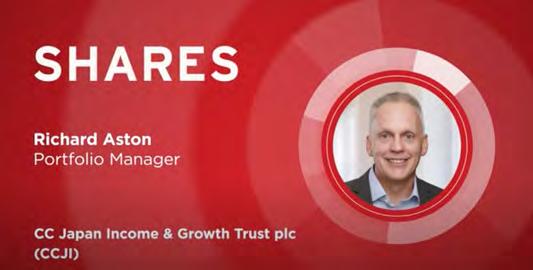
Uncovering income & growth opportunities in Japan
Portfolio manager Richard Aston’s valuation-disciplined; total return approach is designed for investing in the Japanese stock market of today. With the strategy’s core focus on consistent and improving shareholder returns, Richard looks to provide a stable income via dividends and share buybacks from Japanese companies of all sizes. Richard’s high conviction and index agnostic portfolio aims to capture the key beneficiaries of Japan’s improving corporate governance and ongoing structural economic reforms.
THE INCREASING IMPORTANCE OF DIVIDENDS IN JAPAN
Dividends, as well as share buybacks, continue to rise in Japan thus improving shareholder returns for investors. With a focus on companies that can provide both a stable dividend AND can demonstrate the ability to grow, CC Japan Income & Growth Trust aims to capture the best ideas that corporate Japan has to offer across sectors, the full market cap spectrum and even geographical reach (domestic, regional & global leaders).
The income focus warrants a disciplined approach to valuation and detailed fundamental research prevents the
Trust from overpaying for high-growth companies that are often priced for perfection, whilst also avoiding cheap unloved stocks that are in-fact value traps.
The Trust’s consistent and disciplined approach has demonstrated that it can perform throughout the cycle having meaningfully outperformed the TOPIX Total Return (in GBP) since launch in December 2015.
To find out more visit:
www.ccjapanincomeandgrowthtrust.com
Source: Independent NAVs are calculated daily by Apex Listed Companies Services (UK) Limited (by Northern Trust Global Services Limited pre 01.10.17.) From January 2021 Total Return performance details shown are net NAV to NAV returns (including current financial year revenue items) with gross dividends re-invested. Prior to January 2021 Total Return performance details shown were net NAV to NAV returns (excluding current financial year revenue items) with gross dividends re-invested. Ordinary Share Price period returns displayed are calculated as Total Return on a Last price to Last price basis. Past performance may not be a reliable guide to future performance. The price of investments and the income from them may fall as well as rise and investors may not get back the full amount invested. All figures are in GBP or Sterling adjusted based on a midday FX rate consistent with the valuation point. Inception date 15.12.15. Investments denominated in foreign currencies expose investors to the risk of loss from currency movements as well as movements in the value, price or income derived from the investments themselves and some of the investments referred to herein may be derivatives or other products which may involve different and more complex risks as compared to listed securities. CC Japan Income & Growth Trust plc (the Company) does not currently intend to hedge the currency risk.
In less than 25 years Salesforce (CRM:NYSE) has become a giant of the global software industry and an iconic in Silicon Valley.
Valued at $206 billion, it is the thirty-second largest company on the S&P 500, and according to Fortune’s latest surveys, ranks eighth in the world’s 100 best companies to work for, and eleventh on the most admired companies in the world.
All well and good, but what sort of value has the San Francisco-based company’s stock created for investors? In short, an enormous amount –the shares have achieved a 6,324% total return since listing in 2004. Morningstar data shows that over the past decade the shares have averaged a compound annual return of 18.9% thanks to the company beating analyst forecasts in every quarter for a decade.
Put that into perspective… a $1,000 investment when it first joined the market would today be worth in the region of $64,000 assuming all dividends reinvested. It’s the sort of returns from which millionaires are created and can turn a modest pension pot into a very comfortable one, even for ordinary investors.
But we all know that past returns offer no guarantee for the future, especially when that future looks very different to what has gone before. The era of cheap money is over and most experts believe we will be living with higher interest rates even once the inflation monster has been tamed.
This poses investors with a fundamental question; can Salesforce shares continue to deliver
above-average returns in a reshaped economic order, and even if you believe the answer is yes, are the shares priced attractively enough?
WHAT’S THE OPPORTUNITY?
Founded in 1999 by Marc Benioff and Parker Harris, Salesforce is the global leader in customer relationship management software, and it essentially created the Software-as-aService model.
Salesforce calls itself the ‘customer company’, providing more than 150,000 clients both large and small with the tools and applications for sales, service, marketing and more.
An estimated 17 million people are thought to be trained on Salesforce products that help teams work better together, create greater understanding of what customers want and need using customer

What is Software-as-a-Service?
Software-as-a-Service or SaaS is a cloud-based software delivery model that allows endusers to access software applications over the internet. With a SaaS model, the software is hosted on remote servers, maintained and updated by the service provider, and made available to customers via web browsers, mobile apps and APIs (application programming interfaces). Key benefits include lower upfront costs, scalability, flexibility and accessibility.
further boost Salesforce’s own revenue growth. Overall, the investment bank sees Salesforce’s future cash flow growth as underappreciated, and when its analysts crunch the numbers, they get a 12-month share price target of $325, more than 50% higher than the current $212 level.
GROWTH SPEND NEEDS TWEAKING
At the start of June, Salesforce reported first quarter earnings and revenue that beat expectations and full-year earnings guidance was lifted despite larger project installation dates being pushed back. Yet the shares fell as much as 7% in response, mainly because of rampant costs.
data to provide solutions to real-world problems. Customer 360 is its full-service platform, although various toolkits can be subscribed to separately.
Source: Salesforce Q1
You could call it a niche market, but it’s a very large one – investment bank Goldman Sachs thinks Salesforce’s total market opportunity is around $280 billion. It is also a critical one, particularly for bigger businesses, driving productivity and thus client revenue, and becomes so embedded in operations that it is almost impossible to do without, even in a recession.
As one analyst noted: ‘Salesforce is ingrained in the fabric of so many companies and has become so important in the way they operate and conduct business.’ This is borne out by the fact that its net revenue retention has remained stable at roughly 90% over the past two decades.
Market intelligence firm IDC forecasts that by 2026, the Salesforce ecosystem will create 9.3 million new jobs and create $1.6 trillion in new business revenue worldwide.

Goldman Sachs says infusing artificial intelligence into Salesforce’s core software will bring new opportunities for the firm’s clients, which should

Source: Investing.com
Capital expenditures in the quarter totalled $243 million, up about 36% and above the $205 million analyst consensus, overshadowing a 1% and 5% beat on revenue and earnings per share respectively.
There is work to do on how much Salesforce invests in its future growth, which is why it has caught the eye of activist investors Elliott Management, Third Point and others, who are demanding that the company takes the scalpel
to costs.
Plans to cut its workforce by 10% will help, as will action to reduce its office footprint. More job cuts could be coming, some analysts speculate.
It achieved better-than-predicted operating margins of 28% in the first quarter. Goldman Sachs believes these are set to climb to 30% and beyond over the next few years, thanks to cost-saving initiatives, which have intensified because of the tech spending slowdown and a trending wave of belt-tightening.
This does appear to have impressed some investors, with Elliott no longer demanding its own board representation.
Caught in the crossfire of a debate about growth versus margin protection, challenges await Salesforce. Clients are still looking carefully at deals, which are taking longer to close than they were in the past. Now, the company is looking at how to automate the selling process on the low end of the market and make its salespeople more productive, including the launch of Einstein GPT, Salesforce’s own generative chatbot.

ARE THE SHARES WORTH BUYING?
Looking at earnings estimates over the next three years, the stock is on price to earnings multiples of 28.4, 23.5 and 20 for each respective 12-month
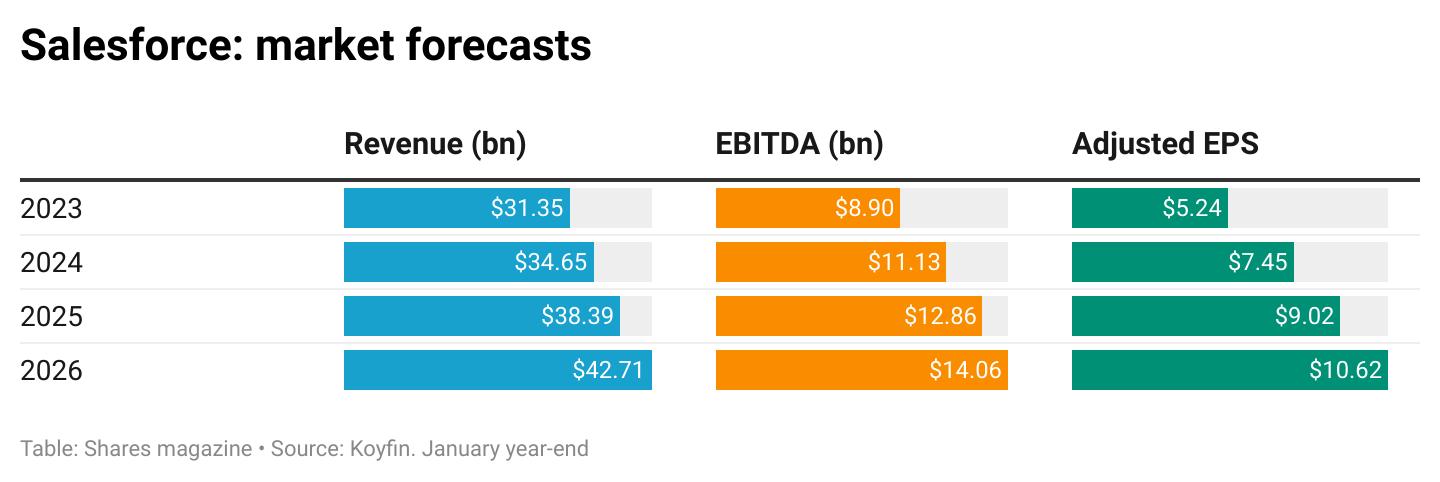
period. That implies an average PE ratio of 24 for a company growing earnings at an average 27% over the same time frame. The rating looks fair for that kind of growth.
Free cash flow was $4.25 billion in the first quarter, comfortably covering the $1.11 billion interest on borrowings. Salesforce also returned $2.1 billion in the period via share buybacks, although it does not pay a dividend.

‘Salesforce continues to impress, with another strong quarter with revenue and profitability ahead of our expectations,’ said Morningstar analysts following the latest quarterly update. They finetuned their model with profitability expectations moving up a bit, offset by slightly lower growth, resulting in an unchanged stock fair value estimate of $245, below Goldman’s estimate but still 16% up from current levels.
‘The shares look attractive especially in light of the modest sell-off in the aftermarket, and the stock remains one of our top picks,’ added Morningstar. Shares agrees that the stock is worth buying.
By Steven Frazer News EditorStill getting it
Earnings at many of AIE’s holdings remain strong…
Attempting to make macroeconomic calls is extremely difficult and you can end up a bit like the inhabitants of Laputa from Gulliver’s Travels, engaging in an activity that seems deeply logical but is ultimately closer to pseudoscience.
This is part of the reason that the analysts and managers of Ashoka India Equity (AIE) avoid making such calls. The managers’ views on doing so are captured succinctly by a letter they wrote to shareholders in 2021, where they noted that “decisions that are bereft of bottom-up fundamental analysis and are instead driven by macro considerations, are fraught with high risk of substantial absolute and relative losses.”
It is worth noting that this does not mean macroeconomics is irrelevant. That something is hard to predict is not the same as saying it has no impact. But to try and make precise predictions to the detriment of actually analysing the companies you’re investing in is not likely to end well. Perhaps more importantly, doing proper due diligence on the companies you’re investing in can often negate the negative impact a future event you’re concerned about may have.
AIE’s portfolio arguably illustrates this. The managers have developed an in-house cash flow analysis system and also spend a significant amount of time undertaking due diligence efforts on prospective investments. They also avoid companies whose success is more driven by cyclical factors, as well as those that are more at risk of being beholden to a small group of stakeholders, like a family owner.

For example, Titan Co is one of the trust’s largest holdings. The company sells watches, jewellery, eyewear and clothing, via its own brands and third-party companies. In its most recent financial results, the company saw a 50% uplift in its year-on-year profit numbers during the last quarter. Significantly, the firm saw growth across the segments it operates in, although more than three-quarters of revenue comes from its jewellery business.
It’s plausible that this was driven by a desire for ‘real’ assets as inflation rises. However, Titan has seen its revenue
rise every year, bar one, for the past two decades, with a compound annual growth rate of close to 20%. The most recent quarterly growth may be more pronounced but it fits with the broader trend we’ve seen drive the company’s success, namely a growing demand for discretionary consumer goods in India, where the average annual salary is now close to $5,000.

Avalon Technologies, another AIE top 10 holding, represents a similar growth story but with a different customer base. The company was founded in 1999 and manufactures components for a variety of industries, including the clean energy and communications sectors.
The company held its IPO in April and saw a 30% uplift to revenue in its most recent results but a near doubling in operating income, as the increase in sales was not offset by a commensurate increase in costs.
Unlike Titan, which is benefitting more from the growing wealth of Indians, Avalon’s success seems more driven by the move away from manufacturing in China. For example, Apple want to shift 25% of global iPhone production to India by 2025. Samsung also announced in February that it will invest over $200m to build a new refrigeration manufacturing facility in India, adding to the mobile phone facilities it already has in the country.
Is it plausible something will derail these trends and harm Avalon’s prospects? Perhaps. But for now the company, along with other AIE holdings, is still producing strong cash flows and earnings growth.
And the trust’s decision to invest in the firm was based on those types of factors, as opposed to what external forces may or may not impact it. Given that AIE delivered annualised share price total returns of over 14%, in GBP terms, since its IPO in July 2018 through to the end of May 2023, it’s probably fair to say that – at least so far – it’s a strategy that’s held up well.
As is probably clear from this article, predicting whether or not that will continue isn’t easy to do. But as the spectre of an economic downturn looms in the distance, it seems wiser to focus on finding good companies that can perform well in a downturn, rather than trying to determine exactly when that downturn might hit.
India Equity is a client of Kepler Trust Intelligence. Material produced by Kepler Trust Intelligence should be considered as factual information only and not an indication as to the desirability or appropriateness of investing in the security discussed. Kepler Partners LLP is a limited liability partnership registered in England and Wales at
Is this an opportune moment to pounce on
private equity trusts?
Most of the universe are selling on big discounts, but there are risks to consider before dipping in

According to the Association of Investment Companies (AIC), private equity trusts delivered an average return of 409% over the 10 years to 31 May 2023, which compares very favourably to 156% for all investment companies.
Yet despite this spectacular long-run performance, 14 out of 17 trusts in the AIC’s Private Equity sector trade on double-digit discounts to NAV (net asset value) at the time of writing.
This derating of the sector, one flush with longestablished funds offering diversified access to an asset class normally off-limits to retail investors, could offer a compelling buying opportunities
Best private equity performers (10-year share price total return)
despite the testing economic backdrop of high inflation and rising interest rates.
Felix Haldner of Partners Group, which manages Princess Private Equity (PEY), explains that 2022 was marked by concerns around inflation, higher interest rates, and energy and supply chain constraints leading to disruption across markets.
But peering ahead, ‘a more positive market environment bodes well for private markets as price expectations between sellers and buyers converge and credit becomes more available’.
Haldner points out that when private market investment activity picks up after an economic downturn or a severe market correction, there is typically ‘an interesting period where private market investors can acquire attractive assets at lower valuations’.
Seasoned industry player Helen Steers is lead manager of Pantheon International (PIP), which invests in a diversified portfolio of private equity funds and occasionally directly in private companies.
While there will be winners and losers in the current environment, Steers argues the best private equity firms will ‘rise to the occasion and take advantage of this period of change to uncover interesting investment opportunities’ and expects there will be some ‘excellent returns’ made during this period.
WHY INVEST IN PRIVATE EQUITY?
Private equity trusts provide diversified access to an asset class that some see as complicated and controversial and is normally inaccessible to retail
investors; their shares are traded on the stock market, making it easy to make small investments. Private equity’s ability to grow businesses through methods including sales optimisation, focusing on company management, investing in new markets and tech enablement such as digitalisation and automation, has led to private equity consistently outperforming public markets.
Fans of the asset class argue growth in this industry has become structural, because companies are able to stay private for longer as private equity is able to provide them with more capital. In turn, investors need an allocation to private equity to access the high-growth niche market leaders and disruptive businesses of the future, operating in everything from AI and digitalisation to the green transition or medical technology.
Steers also stresses that in recessionary periods and bear markets, ‘top quartile managers have outperformed public markets by even more than in bull markets’.
Private equity trusts on wide discounts
SO WHY THE CHUNKY DISCOUNTS?
But industry sceptics doubt private equity can replicate the returns seen over the last 10 years in the new era of stubborn inflation and higher interest rates, which has created a less conducive exit environment and caused IPO (initial public offering) activity to slow down dramatically.
The biggest worry right now centres on the risk of write-downs in the private equity sector (see Delayed reckoning on the way overleaf) because of falls in listed market comparable companies, a possible recession and higher debt costs for a sector which continues to face questions about fees.
This cocktail of concerns has left some listed private equity trusts selling on discounts of more than 40%, versus more typical levels of 10-20%. The
last time discounts were this extreme was during the March 2020 Covid sell-off and, before that, the aftermath of the Great Financial Crisis in 2008.
Among the sector’s largest and most liquid trusts, HarbourVest Global Private Equity (HVPE) trades at a 46.3% NAV discount, while ICG Enterprise Trust (ICGT) and Pantheon International both sell at similarly wide discounts of a smidge above 42%.
Reflecting its position at the top of the sector’s best 10-year share price total return performers, HgCapital Trust (HGT), an investor in unquoted software and services businesses with resilient business models, is on a smaller 20.9% discount while NB Private Equity Partners (NBPE) sits on a 30.9% discount.
The two outliers are the UK’s largest listed private equity firm 3i (III), which trades on a 13% premium, and Literacy Capital (BOOK), which invests directly in private UK-based businesses and sells on an 8.6% premium; Literacy stands out for its strong performance since IPO in June 2021 and
Duo defying discount trend

a unique charitable objective to donate 0.9% of annual NAV to charities focused on improving child literacy.

On the thorny issue of fees, Alan Gauld, manager of abrdn Private Equity Opportunities (APEO), concedes private equity is a relatively expensive asset class but the NAV returns, which are net of fees, continue to be strong. He also points out that private equity involves ‘active value creation, which requires serious resource and expertise’.
To make differentiated returns in private equity, it is about ‘accessing and partnering with the best private equity firms that generate the best net returns.
‘These are typically oversubscribed and hence have negotiating power when it comes to fees.’
DELAYED RECKONING ON THE WAY?
As discussed, there is real concern the industry is entering an era of structurally lower returns due to the impact on valuations of rising interest rates, which will also constrain debt availability in the years ahead.
They also see a delayed reckoning ahead for private equity as managers mark down their portfolios. This concern also weighs on Global sector trusts with exposure to illiquid unquoted stocks such as Scottish Mortgage (SMT) and F&C Investment Trust (FCIT) and Flexible Investment sector constituents Caledonia Investments (CLDN) and RIT Capital Partners (RCP).
The counter argument is that private valuations follow clear industry standards and are audited annually and, even in today’s difficult markets, portfolio companies are being sold at premiums to carrying values. Private equity trust managers also point out that buyout valuations have been conservative over the last decade, which is why the industry has continued to see valuation uplifts when private companies are sold.
‘Private equity managers are generally pretty conservative when it comes to valuing their businesses,’ stresses Steers, ‘because there is nothing in it for them to show large uplifts in unrealised valuation. They are paid a
management fee but the carried interest that they get really all resides on how much they can actually sell businesses for in cash.’
Richard Hickman, managing director at HarbourVest, the manager of HarbourVest Global Private Equity, points out private market valuations ‘have historically been less volatile than public markets both on the upside and downside.
‘Private valuations were not, in most cases, written up in line with the peaks seen in public markets in 2021, and therefore should not be expected to suffer to the same degree on the downside. Any remaining valuation scepticism might be allayed by noting that maturing portfolio investments are still being realised at a premium to carrying value.’
Also weighing in is ICG Enterprise’s manager Colm Walsh, who emphasises the conservatism of private equity managers, who ‘don’t get paid on unrealised valuations unlike some asset classes.
‘And when managers sell things, they don’t want to be reporting a sale at a reduction to the previous carrying value, and that is one of the reasons why you see this consistent pattern of uplifts. If we spot something that looks particularly egregious, which is rare, we will provide against it.’
OUR FAVOURITE PRIVATE EQUITY TRUSTS

HarbourVest Global Private Equity (HVPE) £20.70
Discount to NAV: 46.3%
HarbourVest Global Private Equity
This trust’s wide NAV discount shows a ‘clear disconnect between the resilient portfolio returns versus risk perception’ according to broker Peel Hunt, which sees scope for a recovery in the rating. HarbourVest, which invests in private companies and portfolios of private companies through funds managed by HarbourVest Partners, has a track record of materially outperforming public markets through the cycle and has generated 10 year annualised total returns of 13%. Ultra-diversified with over 1,000 underlying company holdings, the fund’s spread of exposure reduces risk and should continue to help support its NAV in these testing times. HarbourVest buys back shares but it doesn’t pay a dividend, electing instead to reinvest realisation proceeds into new investments. At last count, cash and cash equivalents of $310 million and available credit $600 million totalled $910 million, giving it plenty of firepower for deals, although the large investment pipeline (unfunded commitments) as of 31 May totalled $2.7 billion. In the unlikely scenario the trust has a period of negative cash flow with exits continuing at low levels, it could have to sell assets on the secondary market, which is a risk to consider.
NB Private Equity Partners (NBPE) £15.60
Discount to NAV: 30.9%
NB Private Equity Partners
Well diversified by industry, company and vintage year, NB Private Equity has delivered 10-year total annualised returns of 14.7% by investing in a portfolio of direct investments in private companies hand selected by Neuberger Berman’s team of experts. A 30.9% NAV discount is already prices in a valuation ‘haircut’ at the FTSE 250 trust, which invests alongside top tier private equity managers with a bias towards North America, the largest private equity market. NBPE’s focus is on the technology, healthcare and consumer/e-commerce sectors and on companies expected to benefit from structural growth trends and with low cyclicality. Boasting a strong long-term performance and dividend growth record, NBPE has a strong balance sheet following a strong period of realisations which has helped NAV growth and reduced leverage. Stifel sees NBPE as ‘relatively well positioned’ for this environment due to this low leverage, modest outstanding commitments and relatively low company-specific risk, with the largest 10 investments representing 35% of NAV. The largest investment is European discount retailer Action, while other investments include Constellation Automotive and insurance brokerage USI. The fund also benefits from a favourable fee structure, due to its focus on co-investments which results in the bulk of the portfolio having no management fee.
By James Crux Funds and Investment Trusts Editor
Sponsored by Templeton Emerging Markets Investment Trust

Investing in ‘under-owned, underappreciated and undervalued’ emerging markets: 30 years of change
Franklin Templeton’s Andrew Ness on the big opportunities to be had right now in the developing world
The co-manager of Templeton Emerging Markets Trust (TEM), Andrew Ness, has a nice line when questioned on how these markets have changed since he started following them professionally nearly three decades ago. ‘These aren’t your grannies’ emerging markets,’ he says.
He has seen three substantive changes over that time. Emerging market institutions and policy makers have made deliberate changes to their economies to provide increased resilience at times of stress.
Economies have diversified, moving away from ‘low-cost labour arbitrage and the export of cheap stuff,’ says Ness, to being more consumption and technology driven.
Finally, at the company level, emerging market companies have been able to leapfrog more established firms in the developed world thanks to a combination of tech and innovation.
After experiencing a wave of currency crises having started his career at Glasgow-based fund manager Murray Johnstone back in 1994, Ness jokes he was thinking he ‘should have taken that UK equity job’.
‘If you look at the MSCI index back then,’ he expands, ‘it was very different, full of large commodity-centric companies. Chile, South Africa and Russia were big components of the index back then. Now, it’s a very much tech-centric, Asian asset class. Emerging market companies are a big part of the new global economy. They are change agents, with dominant manufacturers in semiconductors and firms leading the renewable energy transition.’
‘UNDER-OWNED, UNDERESTIMATED AND UNDERVALUED’
Despite this major shift in the make-up of emerging markets, Ness notes they are still ‘under-owned,
underestimated and undervalued’.
‘We’ve had this underperformance versus the US for the last 11 years and there’s almost an expectation that will persist in perpetuity,’ he says.
If you look at emerging markets over the last 20 years, Ness notes they have delivered annualised returns of 10.6%. Not as eye-catching as what has been delivered by US stocks during a lengthy bull market, which may have raised investors’ expectations to unrealistic levels, but still a very healthy return.
BARGAIN STOCKS?
Ness notes that emerging markets are at a discount relative to developed markets on both a price to book and price to earnings basis.
‘Underestimation is still persistent. There’s a much higher quality of policy in this asset class, we’ve got much lower levels of debt than the developed world, whether that’s at the sovereign, corporate or household level. We are still expecting to see much higher GDP forecasts for emerging markets than the developed world.
‘People don’t recognise that emerging market companies are some of the most innovative, fastgrowing, tech-centric businesses globally. This is one of the biggest underappreciated factors.’
Countries which stand out for Ness and the rest of the Franklin Templeton team are South Korea – noting a company like Samsung (005930:KRX) could be at the forefront of the so-called ‘fourth

Sponsored
Emerging markets outlook
by Templeton Emerging Markets Investment Trust
Templeton Emerging Markets Investment Trust versus FTSE
100
people, adding that Brazil has natural resource advantages in both hard and soft commodities.
Ness notes the Templeton Emerging Markets Investment Trust portfolio have a high level of diversification and benefit from well-resourced research teams enabling them to find the ‘best ideas out there’.
Taking a pragmatic approach, no sectors are entirely off the cards although there is some resistance to investing in highly regulated utilities stocks or cyclical, fragmented, locally driven and opaque real estate firms. Ness is more positive on technology as well as companies exposed to rising consumption in the media and e-commerce spheres and emerging market banks. ‘There’s a lot more we like than we don’t like,’ he says.
industrial revolution’.
He also sees Korea as a beneficiary of the increasingly tense relationship between Beijing and Washington and attempts to reduce US dependence on Chinese supply chains on electric vehicle batteries and renewable technologies thanks to a long history of research and development in these areas.
‘Valuations still look attractive in Korea,’ Ness adds. ‘And there’s a journey taking place of improved corporate governance and transparency in Korean companies and that will be a tailwind for the market going forward.’
CORPORATE GOVERNANCE IMPROVEMENTS
Ness notes there has always been a wider perception about a transparency and corporate governance deficit in emerging markets but the gap to the developed world is closing.
‘Governments are issuing governance codes to listed corporates to be much more transparent. There are charging the domestic investor base with becoming better stewards of capital through stewardship codes and then you’ve got investors like us, who continue to fulfil their stewardship and fiduciary roles by engaging.’ Ness says engagement on the part of global investors on these issues has really stepped up in recent years.
The fund manager likes Brazil, despite some of the political issues he acknowledges have dominated the agenda over the years. He is a fan thanks to the country’s world-class businesses and a large population of well-educated and talented
As well as big and/or well-known names like Samsung, Taiwan Semiconductor Manufacturing Company (2330:TPE) and Indian bank ICICI (ICICIBANK:NSE), the portfolio also contains lesserknown Chinese electrolytes specialist Guangzhou Tinci Materials (002709:SHE) – a world-leader in its sphere. This is an archetype for the types of companies Ness and the team seek, which are ‘leaders in their respective industries with resilient business models and robust balance sheets’ enabling them to navigate a tricky backdrop.
WHAT ABOUT CHINA?
China still looms large in the emerging markets world and a slower than expected post-Covid recovery has had an impact on sentiment. Ness says: ‘Our expectation the recovery on the ending of zero-Covid was going to be slow and gradual and the market got itself far too hyped up in terms of expected “revenge spending” in China.’
He explains there had been little fiscal support for Chinese households which therefore didn’t have the comfort and accumulated savings to go out and spend on deferred acquisitions as in the West.
He sees recovery over more of a six to 18-month time frame. ‘Sentiment has been extremely negative but that has created opportunities and we are as constructive on China as we have been for some time.’
Why real interest rates matter for the performance of shares


Rates adjusted for inflation are still in negative territory in the UK
For all the wailing and gnashing of teeth over the Bank of England’s 13th straight interest rate hike last week (22 June), the nominal base rate of 5% is still some way below the post-1970 average of 6.4%. Even more tellingly, the real rate of interest – adjusting for inflation – is still minus 3.7% using the consumer price index benchmark for inflation and minus 6.8% using the retail price index.
It might not feel like it for borrowers, but monetary policy is still ultra-loose in the UK, because inflation is not under control. If there is any consolation for those with hefty mortgages, inflation does at least help them in some way as it erodes their debt in real terms.
Where interest rates lie, in nominal and real terms, has just as profound implications for investments and portfolios as it does the wider economy as the accompanying table makes clear. Whereas the post-Great Financial Crisis environment of low inflation and low interest rates meant that investors could argue there was little or no alternative to shares, from a yield or capital gain perspective. Central banks’ dash to jack up interest rates and the effect of their efforts to quell inflation upon bond yields means the picture looks very different now.
THE COLOUR OF MONEY
The return available on cash, as defined by central banks’ base rates, and by extension the riskfree rate available on government benchmark bonds, sets the reference point by which the attractiveness, or otherwise, of all asset classes will be judged.
The 10-year yield on UK government bonds (gilts) is seen as the risk-free rate and any other investment should return more than that amount to compensate for the additional dangers. The higher the gilt yield goes, the less inclined, or obliged, investors will feel to pay up for alternative
Cash and bonds offer competitive yields relative to equities
asset classes, such as shares (and vice-versa).
Right now, in nominal terms, investors can get a superior yield from 10-year and two-year gilts than they can from equities and for much less capital risk. The picture is the same in the US, even allowing for how share buybacks contribute to total shareholder returns. In the UK, the FTSE 100’s cash return plans add 1.8% to the cash yield on the index, and in the US, the S&P 500’s another 2.5%.
Those buybacks help to keep the total yield balance in favour of equities in the UK in nominal and real terms, while in the US equities still offer more than real interest rates and cash in the bank, once inflation is taken into account.
This may help to explain why stock markets are proving relatively resilient in the UK and continue to barrel higher in the US, even though interest rates are way higher than anyone expected them to be 12 months ago.
REAL RATE OF RETURN
No-one knows for sure where inflation and rates will go next – central bankers’ failed ‘transitory’ narrative for inflation in 2021 and panic to catch up with a slew of rate increases in 2022 and 2023 makes that only too clear. Under such circumstances, investors could be forgiven for taking a closer look at their portfolio weightings toward bonds and even cash, relative to equities, especially as any rate cuts during the life of the bonds could mean fixed-income instruments offer potential for capital gain as well as steady coupon payments.
Yet such a decision is not as straightforward as it looks.
Sticky inflation or – worse – a reacceleration in the rate of price increase would do little for the real value of those coupons, even if bonds offer the promise of the return of principal upon maturity. Share prices offer no such safety net and history suggests that a real gallop in inflation, especially relative to prevailing interest rate levels, does them few favours either.
A plunge in real interest rates to deeply negative territory because inflation is soaring does not seem welcome if the experiences of UK and US investors in the 1970s is any guide, or even for that matter portfolios in 2022.
Sharp rises in real interest rates hurt US equities in the 1970s, 1980s and 2000s
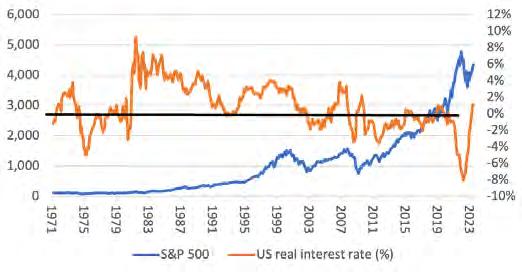
realms whereby the prevailing Fed Funds rate ultimately exceeded inflation by two to three percentage points also caused trouble for stock markets in 2000 and 2007, but the effects were not felt immediately, and strong bull runs continued for some time in the run up to the final smash.
Real interest rates remain deeply negative in the UK

Source: FRED- St Louis Federal Reserve database, US Federal Reserve, Refinitiv data
Equally, a sharp surge in real rates to get inflation under control brings different challenges, if the recessions and bear markets of the early 1980s on both sides of the Atlantic are any guide (and we must accept that the past is no guarantee for the future). Spikes into the
PRECIOUS ANGLE
One asset that loves negative real rates seems to be gold. Surges in inflation, and thus a loss of central bank control as rates lagged, added lustre to the metal in the 1970s and early 2000s, and only fierce efforts to catch up – and hold base rates well above inflation for some time – brought the metal back down to earth.
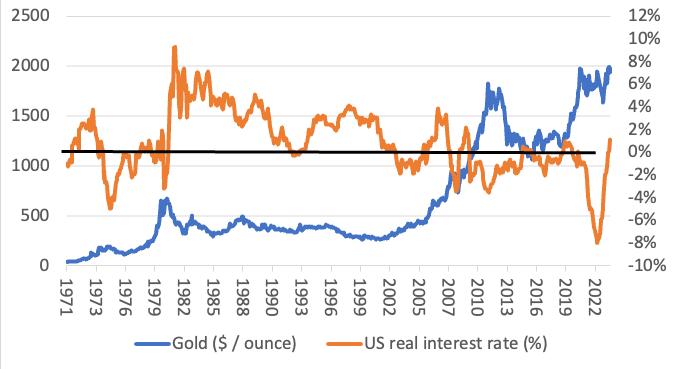
Gold
seems to like negative real rates and hate positive ones
By Russ Mould Investment Director at AJ Bell
In my thirties and looking for undervalued growth opportunities
We talk to Andy about his investment journey and his current portfolio
Our investor this week is Andy, who is in his early thirties and has been investing since he left university around a decade ago.
A history graduate, Andy puts his initial interest in finance and markets down to his father who is an accountant.
‘I can’t remember exactly what the trigger was,’ says Andy, ‘but around the time I was leaving university the economy was still just coming out of the global financial crisis and it felt as though there were lots of cheap stocks to choose from.’
CHANGE OF STRATEGY
To begin with, he opened a spread-betting account and punted the markets with small amounts of spare cash before deciding that investing in individual UK stocks was ‘probably a more sensible way to build my long-term wealth’.
He describes himself as ‘not a strict value investor but more of a GARP (growth at a reasonable price) guy’, with the result that he tends to look for firms where the market is underestimating either the intrinsic value or the growth potential.
‘Like a lot of people, I think my very first purchase was Vodafone (VOD),’ says Andy, but after a while he shifted his focus to income shares like National Grid (NG.) and SSE (SSE) along with blue-chips like Diageo (DGE) and Reckitt (RKT) with the aim of reinvesting a steady stream of dividends to get the benefits of compounding.
‘I also remember Pan African Resources (PAF:AIM) as an early investment, which recently came back into my portfolio on account of the gold price being high, although I try to avoid miners generally as they are too specialist for me and I don’t really have an “edge” when it comes to the sector,’ he confesses.
However, compounding dividends didn’t really
satisfy his interest in spotting ‘hidden value’, so he changed tack to a slightly more diversified and blended approach to try and achieve more capital growth.
DIVERSIFIED PORTFOLIO
His current portfolio consists of around 25 holdings, with a broad spread of funds, investment trusts and individual stocks.
Among his fund and trust holdings are three global equity funds – the HSBC FTSE All-World Index Fund (BMJJJJ3), the Artemis Global Income Fund (BHL2C74) and Murray International (MYI) –as well as a UK equity income fund, a UK micro-cap fund, a US small-cap fund and a European largecap equity fund.
His equity holdings are equally diverse, with a spread of UK asset managers – the Martin Gilbert-backed AssetCo (ASTO:AIM), Polar Capital (POLR:AIM) and private equity specialist Pollen Street (POLN) – followed by a couple of FTSE 100 large-caps, a couple of big financial stocks, two small-cap biotechs and a smattering of renewables, infrastructure, shipping and gold mining companies.

His plan is to eventually invest into more US and overseas-listed shares as well as up to 5% of his portfolio in what he calls ‘highly speculative shares to try and capture some multi-baggers.’
Andy tends to look for growth at a reasonable price, and among his current holdings, ‘Flutter (FLTR) is the only stock which I bought on a high PE (price to earnings) ratio, relatively speaking.’
Andy's current portfolio
Funds & Trusts Category
Artemis Global Income Global Equity Income
Fidelity European Trust European Equity
HSBC All World Index Global Equity
Marlbourgh UK Micro Cap UK Micro-Cap Equity
Murray International Global Equity
Sequoia Economic Infrastructure Global Infrastructure
T Rowe US Smaller US Small-Cap Equity
Vanguard FTSE UK Equity UK Equity Income
Stocks Category
Arix Biosciences Biotech
AssetCo Asset Management
CMC Markets Financial Trading Platform
Diageo Beverages
Flutter Gambling
Inspecs Eyewear
IXICO Biotechnology
Legal & General Life Insurance
Life Sciences REIT Property Investor
NextEnergy Solar Renewable Energy Investor
Pan African Resources Gold Miner
Persimmon Housebuilder
Polar Capital Asset Manager
Pollen Street Asset Manager
Quiz Retailer
Taylor Maritime Shipping Management
FINDING IDEAS
He reads fairly widely on investing, and recommends The Zulu Principle by Jim Slater, How To Make A Million – Slowly by Lord John Lee, Investing Against The Tide by former Fidelity fund manager Anthony Bolton, and The Art Of Execution by Lee Freeman-Shor (previously reviewed here).
On a day-to-day basis, Andy reads the financial news on various apps and websites, as well as making time to watch fund manager interviews on YouTube.
He has recently subscribed to Stockopedia and likes to research small-cap ideas, for which the site’s stock reports have been useful.
Through his reading and research, he hopes to generate investment ideas across different buckets, ‘such as companies trading ahead of expectations, companies undergoing transformation and recovery plays, high revenue growth shares, potentially undervalued shares and so on.’
He adds: ‘I’m not a stickler for rules, so my portfolio is quite broad and ranges from biotech and gaming to renewable energy through NextEnergy Solar Fund (NESF), owned for its high yield.’
His ‘one that got away’ is home services group Sureserve (SUR:AIM), which he had owned for a short while and sold just weeks before it was bid for at a 37% premium by European private equity firm Cap10 in April 2023.
Stocks currently on his radar include FTSE 250 defence contractor Chemring (CHG), where he is particularly interested in its cyber-security capabilities, and media group Next 15 (NFG:AIM)

DISCLAIMER: Please note, we do not provide financial advice in case study articles, and we are unable to comment on the suitability of the subject’s investments. Individuals who are unsure about the suitability of investments should consult a suitably qualified financial adviser. Past performance is not a guide to future performance and some investments need to be held for the long term. Tax treatment depends on your individual circumstances and rules may change. ISA and pension rules apply.
By Ian Conway Companies EditorThe Case for US Small Caps
T. Rowe Price
June 2023
Small cap companies – typically defined as companies with a market capitalisation of around US$15-20bn and below – are an integral part of the US equities market. And at T. Rowe Price, we believe there are compelling reasons for maintaining a long-term, strategic allocation to US small caps.
The US has the largest and most diversified smaller companies’ opportunity set in the world. The US market is a hugely important space for smaller companies to grow, offering a particularly supportive, pro‑business environment where entrepreneurship is esteemed, and small business success stories are championed.
The US small cap universe (which represents approximately 15 20% of the total size of the US equity market1) incorporates a broad and diverse mix of businesses in which to invest— from established industry leaders to new and innovative “micro‑caps” at the smallest end of the size spectrum.
There is no denying that as more people have been able to access more information over the years, markets have become more efficient. However, the reality is that the small cap equity market remains relatively inefficient versus its larger peers. Many smaller companies remain underappreciated, or even unknown, by the broader investment community. Whereas larger companies are typically covered by on average as many as 20 traditional Wall Street analysts, small and medium‑sized companies often have less than half the coverage, which creates good opportunities for research‑driven, active stock‑pickers to uncover hidden gems.
In addition, US small caps have the potential to achieve higher investment returns when held for the long term. While it is true that smaller companies tend to be more volatile, they have historically outperformed their larger‑company counterparts over longer time periods. Many of
these companies are in the early stages of their development, are potentially undergoing rapid expansion, and yet are still small enough to deliver growth that is meaningful.

With superior growth potential, smaller companies can also provide diversification, as the drivers of performance tend to be different from those of larger companies. They tend to have simpler business models, with less sensitivity to macro issues or industry developments than bigger firms; instead, they are typically more dependent on company specific news and developments.
Finally, the greater dispersion (range) of returns across the US small cap universe relative to large cap companies can provide active investment managers with better opportunities to add value. Effectively, investors are better rewarded for picking potential winners in the small‑cap space, such as uniquely advantaged businesses, or those that are undervalued relative to their assets.
While the market environment remains challenging, the outlook for US small caps – in our view – looks compelling. Historically, small caps have benefited most during periods of high, but easing, inflation – arguably conditions that the US faces today – due to the fact that smaller companies tend to be more nimble businesses, and so are quicker to respond to the changing environment than their larger counterparts. At the same time, history tells us that small‑caps have tended to outperform strongly coming out of a slowdown and leading into recovery.
With risks and the prospect of higher volatility, it pays to be selective when it comes to investing in smaller companies, but consistent exposure to smaller companies as part of a balanced portfolio can add value over the long term.
How to use your children to cut your capital gains tax bill
The
The Government has cut the amount you can make in capital gains before you face tax, and it’s taking an axe to the tax-free allowance again next year too.
However, some clever family planning can help those who are sitting on gains to protect their wealth from a tax hit, both now and in the future.
Most people will have thought about using their spouse or partner to help cut their tax bill, to ensure they are using both their allowances. But often children are overlooked for tax planning. Anyone with a child or grandchild can do some smart manoeuvring to help cut their capital gains tax bill.
WHAT ARE THE OPTIONS?
Children have their own capital gains tax allowance, the same as adults. That means in the current tax year children can have gains of £6,000 and from next year gains of £3,000. However, children can’t directly own investments in their own name until
they turn 18, so any asset transfer would typically use a trust.
A bare trust is often the simplest way and allows assets to be transferred into the child’s name, which means you can use their tax-free allowances.

There is a rule to limit this benefit when it comes to the income a child can earn from savings and investments, but that doesn’t apply to capital gains.
Once any assets transferred by parents into their child’s name earns more than £100 in income, that income will be taxed as though it is the parents’ –which is intended to stop parents funnelling money into accounts in their child’s name. But there is no equivalent rule for capital gains, so parents can maximise their child’s allowances.
HOW MUCH COULD I SAVE IN TAX?
Transferring assets to your child means that any gains over their annual limits will be taxed as though they are the child’s. As children often have no (or very little) income, this means gains will
likely be taxed at a lower rate than the parent. Basic-rate taxpayers pay 10% on gains on investments, while higher and additional rate payers pay 20%. That means a child would pay 10% tax on gains compared to the 20% rate a parent or grandparent may face.
WHEN IS THE CAPITAL GAIN CALCULATED?
When you transfer investments to your child and grandchild it is a taxable event for capital gains tax purposes. That means you need to work out the market value of the assets at that point and see if you owe tax on the gains.

However, if you haven’t already used your capital
gains tax allowance this year you could realise gains up to £6,000 (in the current 2023-24 tax year) and then transfer more assets next year up to the £3,000 limit for 2023-24.
You can apply for a bare trust with AJ Bell via this link. If you have more than one child, then you need to open a bare trust dealing account for each child. But unlike a Junior ISA, there are no limits on how much you can put into a bare trust dealing account each tax year.
By Laura Suter AJ Bell Head of Personal Finance
AN EXAMPLE OF HOW THE PROCESS WORKS
Victoria owns shares in Company X that she bought for £10,000. They are now worth £20,000. She could transfer £12,000 of shares to her daughter, Annie, in the current tax year, which could equate to a capital gain worth £6,000.
Then next April she could transfer another £6,000 of shares, which equates to a £3,000 capital gain (for simplicity’s sake we’ll assume the shares don’t change in value in that time). That leaves her with £2,000 worth of shares, with a £1,000 gain, that she could transfer the
following year.
What’s more, if we fast forward five years, the shares in Company X that Annie owns are now worth £30,000. That represents an additional gain of £10,000 when compared to the value when the shares were transferred to her. The investments could be sold on her behalf, using up her £6,000 tax-free allowance and the remaining £4,000 of gains would be taxed at just 10%, rather than the 20% rate her mother Victoria would face, as a higher-rate taxpayer.
CLEANTECH LITHIUM
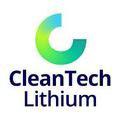
CleanTech Lithium proudly sustainable, committed to net-zero. Our mission is to produce carbon-neutral lithium for the Electric Vehicle (EV) future.
IMPAX ASSET MANAGEMENT

Impax Asset Management Group offers a range of listed equity, fixed income and private markets strategies.
The India Capital Growth Fund is a closed ended Investment Company, listed on the main board of the London Stock Exchange.

TOUCHSTONE EXPLORATION
Touchstone Exploration Inc. is a UK listed but Canadian-based, international upstream oil and gas company currently active in the Republic of Trinidad and Tobago.

WHO WE ARE
EDITOR: Daniel Coatsworth @Dan_Coatsworth
DEPUTY EDITOR: Tom Sieber @SharesMagTom
NEWS EDITOR: Steven Frazer @SharesMagSteve
FUNDS AND INVESTMENT
TRUSTS EDITOR: James Crux @SharesMagJames
EDUCATION EDITOR: Martin Gamble @Chilligg
COMPANIES EDITOR: Ian Conway @SharesMagIan
INVESTMENT WRITER: Sabuhi Gard @sharesmagsabuhi
CONTRIBUTORS: Danni Hewson
Laith Khalaf
Russ Mould
Tom Selby
Laura Suter
ADVERTISING Senior Sales Executive Nick Frankland 020 7378 4592 nick.frankland@sharesmagazine.co.uk

Shares magazine is published weekly every Thursday (50 times per year) by AJ Bell Media Limited, 49 Southwark Bridge Road, London, SE1 9HH. Company Registration No: 3733852.
All Shares material is copyright. Reproduction in whole or part is not permitted without written permission from the editor.

Shares publishes information and ideas which are of interest to investors. It does not provide advice in relation to investments or any other financial matters. Comments published in Shares must not be relied upon by readers when they make their investment decisions. Investors who require advice should consult a properly qualified independent adviser. Shares, its staff and AJ Bell Media Limited do not, under any circumstances, accept liability for losses suffered by readers as a result of their investment decisions.
Members of staff of Shares may hold shares in companies mentioned in the magazine. This could create a conflict of interests. Where such a conflict exists it will be disclosed. Shares adheres to a strict code of conduct for reporters, as set out below.
1. In keeping with the existing practice, reporters who intend to write about any securities, derivatives or positions with spread betting organisations that they have an interest in should first clear their writing with the editor. If the editor agrees that the
reporter can write about the interest, it should be disclosed to readers at the end of the story. Holdings by third parties including families, trusts, selfselect pension funds, self select ISAs and PEPs and nominee accounts are included in such interests.
2. Reporters will inform the editor on any occasion that they transact shares, derivatives or spread betting positions. This will overcome situations when the interests they are considering might conflict with reports by other writers in the magazine. This notification should be confirmed by e-mail.
3. Reporters are required to hold a full personal interest register. The whereabouts of this register should be revealed to the editor.
4. A reporter should not have made a transaction of shares, derivatives or spread betting positions for 30 days before the publication of an article that mentions such interest. Reporters who have an interest in a company they have written about should not transact the shares within 30 days after the on-sale date of the magazine.
Energy, renewables and resources

FULCRUM METALS POLARX
SERABI GOLD
Introduction
Welcome to Spotlight, a bonus report which is distributed eight times a year alongside your digital copy of Shares.
It provides small caps with a platform to tell their stories in their own words.
This edition is dedicated to businesses powering the global economy, whether that be in mining, oil and gas, the renewables space, infrastructure or energy provision.
The company profiles are written by the businesses themselves rather than by Shares journalists.

They pay a fee to get their message across to both
existing shareholders and prospective investors.
These profiles are paidfor promotions and are not independent comment. As such, they cannot be considered unbiased. Equally, you are getting the inside track from the people who should best know the company and its strategy.
Some of the firms profiled in Spotlight will appear at our webinars and in-person events where you get to hear from management first hand.
Click here for details of upcoming events and how to register for free tickets.
Previous issues of Spotlight are available on our website.
and, as such, are written by the companies in question and reproduced in good faith.
Members of staff may hold shares in some of the securities written about in this publication. This could create a conflict of interest. Where such a conflict exists, it will be disclosed. This publication contains information and ideas which are of interest to investors. It does not provide advice in relation to investments or any other financial matters. Comments in this publication must not be relied upon by readers when they make their investment decisions. Investors who require advice should consult a properly qualified independent adviser. This publication, its staff and AJ Bell Media do not, under any circumstances, accept liability for losses suffered by readers as a result of their investment decisions.
Addressing the big investment vacuum in critical minerals
This article is based on a report produced by Edison Investment Research, other thematic research is available.
The global transition away from hydrocarbons as an energy source means a new ecosystem encompassing renewable power generation, storage, transmission and use needs to be built.

This ‘infrastructure’ needs investment, but we argue that the oil industry – and the large end of the minerals extraction industry – has been slow to embrace newer, smaller and high-growth commodities and this vacuum means slow supply
growth and, inevitably, high commodity prices.
Governments are beginning to identify the risk that there are not enough well-funded, permitted, highquality companies in most capital markets focused on critical minerals. The demand pull: More than EVs This report is another in our series on two of our major global themes, namely energy transition and critical minerals.
THE DEMAND PULL: MORE THAN JUST EVS
The demand is not just about electric vehicles (EVs). Renewable energy generation needs minerals such as rare earths for wind
turbines, and graphite, lithium and nickel for battery energy storage systems for power grids, and silver for solar panels. Charging infrastructure will need large amounts of copper. The impact on energy systems will accelerate demand growth rates to over 20% for several years for some of these metals, with industries needing to be four-to-five-times as large by the end of the 2020s – an unprecedented demand shock.
In this research we discuss why certain materials are critical, how their demand is affected by energy transition, how current and
A transition from hydrocarbons will require lots of spending to increase the supply of crucial commodities
future supply could evolve and who the major listed producers are.
AND THE POLICY PUSH: DECARBONISING AND SECURITY
Governments are rightly wary about swapping one set of geopolitical risks for another as energy systems change.
Ambitious plans to decarbonise transport and industry through policies such as net zero by 2050 and mandated end of internal combustion engines need to be balanced with making sure the materials and supply chains can cope and new risks are not created. This catch up in critical materials policy is underway, with the past 12 months seeing explicit critical minerals policies being launched in the United States, Europe, the UK and Canada.
Some key end users are beginning to identify longrun supply risk and backward integrate (eg. General Motors (GM:NYSE), most notably in lithium and rare earth magnets). We argue that the missing link is the lack of fresh capital, with incumbent large energy and mining firms tied to capital returns rather than long-term growth investing.
KEY CONCLUSIONS
We conclude that while some critical minerals (such as graphite, lithium and rare earths) are smaller than the dominant, large mined commodities (iron and copper), they will be of reasonable magnitude in 2030, with far higher growth prospects and more exposure to energy transition trends.
We argue that this high growth sector is not attracting capital from either the traditional energy producers (who instead are pursuing renewables such as wind) or diversified miners (who are paying dividends and not growing). n We summarise the regulatory and policy environment, which has developed rapidly over the past 12 months.
Governments are realising that their ambitions for net zero by 2050, and the accelerated electrification of transport, could potentially create shortages and new geopolitical risks.
Most critical minerals are not in geological short supply, though many are heavily dependent on China, either for mining or processing. Consumers and governments are realising that deglobalising these supply chains is now urgent.

Critical minerals is not
a well-defined term, but typically refers to materials exposed to energy transition or defence applications, with supply chains that are not well developed or that involve geopolitical risk. In this note we discuss lithium (used in batteries), rare earths (used in permanent magnets in wind turbines and EV motors), cobalt (used in some battery chemistries), nickel (which has a growing battery impact) and graphite (used in battery anodes). We acknowledge this is a subset of a much wider group of minerals critical to both energy transition and national security.
Metals not commonly thought of as critical play important roles in decarbonisation and energy transition (ie silver due to its use in solar panels). Notable other exclusions and major issues include copper, which is critical for electrification and charging infrastructure, but has its own complex and major issues, principally related to the decline in greenfield exploration spending and the scale of capital and planning needed for the industry to expand. Similarly, fertilisers are critical for long-run demographic development and food security and have a unique set of geopolitical issues.
WATCH RECENT PRESENTATIONS
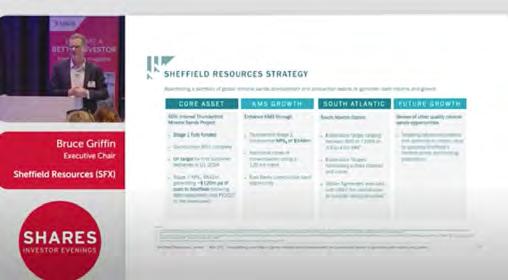


Fulcrum Metals (FMET)
Ryan Mee, CEO
Fulcrum Metals is a multi-commodity explorer with a diverse portfolio of gold, base metal, and uranium projects positioned close to mineral rich prospective areas and producing or near producing assets in Canada, a world-class mining destination.
Sheffield Resources (SFX)
Bruce Griffin, Executive Chair
Sheffield Resources is assembling a portfolio of mineral sands development and production assets. The core asset is Sheffield’s 50% interest in the Thunderbird project in which is fully funded with construction over 80% complete and less than 12 months from first production.
Serica Energy (SQZ)
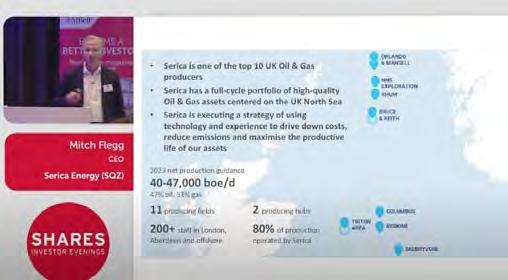
Mitch Flegg, CEO
Serica Energy is a British independent upstream oil and gas company with operations focused on the UK North Sea, where our assets span the full cycle of exploration, development and production. Our main aim is to build a portfolio of assets which enables the Company to utilise its technical and commercial experience to add value to existing producing assets, as well as to explore and develop new reserves.
Fulcrum Metals is unleashing mining potential In Canada


Canada is a global leader in the mining industry, boasting vast landscapes and abundant natural resources. With a strong legal framework, political stability, and a highly skilled workforce, the country offers an attractive destination for mining investment. As global demand for minerals continues rising, Canada‘s mining sector is thriving and playing a vital role in meeting this demand.
One company that has recognised the opportunity Canada offers is Fulcrum Metals (FMET:AIM), an AIM-quoted exploration company which listed on AIM in February 2023, raising £3 million to finance and manage a multi-commodity portfolio of highly prospective gold and base metal projects in Ontario and uranium projects in Saskatchewan; jurisdictions ranked an impressive 12th and third in the Fraser Institute’s latest Mining Investment attractiveness report.
While there has been some prospecting and localised extraction in these areas since the late 19th century, comprehensive exploration programmes have been limited in recent times. Fulcrum recognises the opportunity to unleash the significant prospectivity of these properties through targeted exploration programmes.
A TWO-FOLD APPROACH TO CREATING SHAREHOLDER VALUE
Fulcrum has a two-fold approach to creating shareholder value with the primary focus being to make an economically viable discovery on its flagship Schreiber-Hemlo project in Ontario. Its secondary focus is to establish the prospectivity and commercialise its wider Ontario and Saskatchewan portfolio, with the intention

of attracting potential joint ventures and/or acquisition interests.
Fulcrum‘s Schreiber-Hemlo project covers a significant combined area of 113 square kilometres within the mineral-rich Schreiber-Hemlo greenstone belt. This belt is home to the Hemlo gold mine operated by Barrick Gold (GOLD:NYSE) and Generation Mining‘s (GENM:TSE) Palladium project, both of which have yielded substantial mineral deposits.
One of the company‘s notable projects in SchreiberHemlo is Big Bear. Located at the western end of the Schreiber-Hemlo Greenstone belt, the project exhibits promising geology with metavolcanic rocks, mafic intrusions, and banded iron formations. Recent airborne surveys have identified 253 geophysical anomalies, with 39 designated for priority investigation. Seven separate areas within the project have outlined gold-bearing
quartz veins, with some samples grading as high as 112g/t Au. Additionally, gold in soil anomalies have been identified in five areas, extending up to 250m wide along strike.
Fulcrum’s Little Bear Lake and Schreiber prospects within its Schreiber-Hemlo project are also of particular interest, having showcased significant gold and other mineral occurrences.
Another noteworthy project in Fulcrum‘s Ontario portfolio is the Jackfish property, which contains multiple gold occurrences in quartz veins/stockworks and altered granodiorite. Exploration efforts have unveiled widespread mineralization, including impressive sampling results of up to 39.8g/t Au, 114g/t Ag, and 1.01% Cu, along with anomalous lead and pathfinder minerals.


towards energy metals, with uranium projects in the Northern Athabasca region of Saskatchewan with several noted areas of mineralisation with historic uranium grab samples ranging from 0.43% to 6.22%.
To maximise the value of its mining assets, Fulcrum understands the importance of successful exploration and is looking to utilise all available exploration tools at its disposal to identify and develop the significant potential of its assets.
This includes plans to drill at the Schreiber-Hemlo project later this year which will mark an exciting milestone for the company in its exploration efforts. Fulcrum‘s commitment to advancing its projects is also underlined by a phase two geological mapping and sampling programme across the wider SchreiberHemlo project. This follows a successful initial prospecting and survey phase where 42 priority exploration targets were identified and gold in rock samples returned up to 45g/t.
incorporate historical data to inform its exploration efforts.
While the company‘s assets are currently in the exploration phase, it has a well devised plan and funding in place to conduct exploration activities across its portfolio. Its ambition is to unleash the full potential of its assets and establish Fulcrum Metals as a significant exploration company.
MINING HERITAGE
Co-founded and led by chief executive Ryan Mee, a seasoned private investor in the natural resources space, turned entrepreneur, Fulcrum has made good progress since listing on AIM and the company is particularly excited about the desirable characteristics of the Schreiber-Hemlo Project and Big Bear property, including high-grade gold in surface samples, favourable geology, and potential regional-scale shear zones. It is optimistic for the future.
Fulcrum Metals‘ presence in Canada, a premier mining jurisdiction, is a deliberate move by the company to capitalise on the country‘s abundant resources and favourable investment climate. With an experienced CEO, dedicated team, clearly defined strategy, funding and an interesting range of projects, Fulcrum has the potential to unlock the inherent value of its mining assets, build value for shareholders and contribute to the growth of Canada‘s mining industry.
GEARED TOWARDS ENERGY METALS
It is also worth noting that Fulcrum is also geared
Looking ahead, Fulcrum will look to extend its exploration programme beyond Ontario to include groundworks in Saskatchewan where the company plans to conduct a comprehensive review of hyperspectral data and
PolarX pursuing gold, silver and copper opportunities in Alaska and Nevada

Australian-listed PolarX (PXX:ASX) is an advanced ASX-listed mineral explorer and developer with rapidly growing high-grade copper, gold and silver projects in Nevada and Alaska, USA.
PolarX has an enviable top 10 shareholder list for a junior explorer which includes the funds Ruffer Gold Fund (11.9%), US Global (6.8%) and producer Northern Star Resources (NST:ASX) (10%).
Northern Star Resources recently acquired 10% of PolarX (December 2022). Northern Star is a Top 10 gold producer globally. Their impressive asset portfolio includes the Super Pit in Kalgoorlie, Western Australia, and the high-grade underground Pogo mine, Alaska USA.
PolarX and Northern Star are virtually next door ‘neighbours’ in Alaska with PolarX’s Alaska Range project 90 miles drive from Pogo. PolarX envisages potential synergies may arise with producer Northern Star as they advance their Alaskan exploration assets down the development path towards production.
PolarX’s exploration and development programs in the Alaska Range are focussed on bringing the 100% owned Zackly Deposit and 80% controlled Caribou-Dome Deposit into production.
GREAT STEP TOWARDS MINING OPERATION
Alaska Range’s recently upgraded combined Mineral Resources are now 269,000 tonnes of copper, 203,000 ounces of gold and 3,131,000 ounces of silver which is a great step towards a mining operation.
PolarX has also immediately commenced revising their 2022 mine Scoping Study with these impressive new Mineral Resource numbers with the aim of achieving 20,000 tonnes per annum copper production for a minimum of 10 years. Both Caribou Dome and Zackly mineral systems remain open so PolarX should be able to continue to build their inventory as they move towards mining.
Excitingly, PolarX controls the entire 35 kilometre
Alaska Range belt which is mineralised with Copper, Gold and Silver from surface in various geological forms. PolarX believes this is evidence for more high-grade VMS deposits like Caribou Dome, larger tonnages at their Skarn deposit, Zackly, and one or more large porphyry copper/ gold systems of the same type hosting the world’s largest mines. PolarX is already in the early porphyry discovery stages at its Mars project.
NEVADA PROVIDES A SOLUTION TO ALASKAN SEASONALITY
If there is any exploration drawback with the Alaska Range Project then it’s seasonality. Whilst mines operate year-round, long Alaskan winters confine early exploration work to shorter field seasons. PolarX’s solution for this was acquiring their Humboldt Range project in Nevada.
Nevada was voted 2021’s best exploration and mining jurisdiction worldwide.
The Humboldt Range project lies along the I-80 highway, between the five million ounce Florida Canyon Gold mine, and the 400 million ounce Rochester Silver mine (which also contains 3.5 million ounces of gold) and the Spring Valley gold project (more than five million ounces) in the same geology. This district is starting to look like a new Carlin type trend for which Nevada is famous and could host some world-class deposits.
PolarX’s initial work at Humboldt Range has already revealed multiple extremely high grade gold and silver
Jason Bertonbearing veins more than one kilometres long within even larger gold and silver soil anomalies. PolarX believes this may indicate potential for large scale mining like its neighbours who currently mine the same geology.
POTENTIAL FOR BONANZA VEINS
Drilling in May 2022 intercepted 9.1 metres at 124 grammes per tonne and 49 grammes per tonne Ag from a 27 metre down hole, demonstrating the potential for bonanza grade veins within an expansive mineralised system.
PolarX is currently busy in Nevada undertaking Induced Polarisation (IP) surveys across
the Fourth of July and Black Canyon projects with the plan to embark on drilling targets later this summer.
PolarX’s assets combine existing high-grade resources and impressive exploration upside in two of the world’s best and safest mining regions with road access and excellent nearby infrastructure. Together they provide continuous advancement activity and results.
WHO’S IN CHARGE AT POLARX?
Ph.D, B.Sc (Hons), MAusIMM Managing directorJason is a geologist with more than 20 years’ mining and exploration experience including working for Homestake, Barrick and BHP Billiton and SRK Consulting. Jason has also previously spent two years in private equity investment and four years as managing director of ASXlisted Estrella Resources (ESR:AIM).

Jason holds two Degrees, a Bachelor of Economics and a Bachelor of Science (Hons) plus a PhD in Structural Geology, all from Macquarie University.
Mark Bojanjac B.Com, CA Executive chairMark is a chartered accountant with almost 30 years in the resources industry. He has led several management teams which developed successful mines. He was a founding director of a public company which discovered one of Australia’s highest grade gold mines at EastKundana near Kalgoorlie in Western Australia and managing director of an unlisted public company which successfully developed a 2.4 million ounce gold resource in Mongolia (Boroo Gold) and of a company which developed and sold a three million ounce gold deposit in Gansu, China. He was previously CEO of Adamus Resources Limited, where he oversaw its advancement from an early-stage exploration project through definitive feasibility studies and managed the debt and equity financing to build its successful Ghanaian gold mine. He is currently also a non-executive director of QLD silica sand developer, Metallica Minerals Limited and of WA resources explorer, Kula Gold Limited.
Serabi Gold‘s growing Brazilian production and exploration potential provides excellent exposure to strong gold prices

The gold price has been a beneficiary of the ongoing economic uncertainty caused by global inflationary pressures coupled with the war in Ukraine, with demand driven by gold’s properties as a safe haven investment and hedge against inflation.
Gold equities, and particularly junior gold equities, have lagged this move in the gold price. However, with continued strength in the yellow metal and the increased margins achieved by gold producers, investor demand is expected to increase. Serabi Gold plc (SRB:AIM), with existing production in Brazil, a project under development that should double production and significant exploration blue-sky potential, is one such junior.
LONG-TIME OPERATOR IN BRAZIL
Serabi has been operating in Brazil for over 20 years with ongoing stable production from its Palito Mine. Key to the Company’s longer terms plans is the development and growth of its Coringa project. Serabi’s first quarter operational report issued in April, suggests that this is

exceeding the expectations even of its vastly experienced CEO, Mike Hodgson, who over his career has spent much of his time working in underground, high grade mineral deposits similar to those being operated by Serabi.
The continuity of the Coringa orebody is better than expected, as is the grade, at over nine grammes per tonne during the first quarter. Serabi plans that with the development of its Coringa mine it will be targeting a doubling of its annual production which would see it
producing over 60,000 ounces per year going forward.
The company’s recent news has not all been about gold production. It has long been acknowledged that Serabi’s operations are located within an underexplored but highly prolific mineral province. The Tapajos area of Brazil has reportedly seen over 30 million ounces of artisanal gold produced, much of this during the 1970s and 1980s.
While Serabi’s primary focus has been identification of additional gold deposits, the company’s 60,000 hectare tenement package
is also prospective for other minerals. Following significant fieldwork, the company announced the discovery of copper porphyry mineralisation at its Matilda prospect in March 2022.
TIE-UP WITH VALE
This discovery piqued the interest of several major mining group’s keen to work with Serabi and in May of this year, Serabi announced a tie up with the Brazilian mining giant, Vale (VALE:NYSE), forming an exploration alliance focused on the discovery and definition of commercial copper deposits in Serabi’s tenements.

Vale will finance up to $5 million in the first phase to be completed during the first quarter of 2024, with Serabi operating the exploration activities and three drill rigs already working to complete a drill programme of up to 15,000 meters. Vale’s focus is on base metals rather than gold and the deal means that any gold deposits identified in the programme will revert to Serabi.
It seems on the face of things that it is win-win for Serabi. Subject to the outcome of Phase 1 and identification of a copper project, Vale will continue to sole fund further exploration, evaluation and economic studies with Serabi receiving bullet payments at certain milestones.
A BULLISH OUTLOOK
From the tone of recent interviews, it is clear that Mike Hodgson is bullish on the outlook for the company. Studies required as part of the permitting process for Coringa have been completed and are now in the process of review by the authorities. Serabi
started initial development of Coringa in July 2021 and has operated the mine on a trial mining basis since then with initial ore starting to be extracted from July 2022. This has allowed it time to conduct its own internal test work to optimise mining and processing options.
Serabi has already successfully implemented ore sorting technology at its Palito operation, which removes waste material that is unavoidably mixed with the gold ore during mining prior to further processing. Hodgson reports that the results from sorting of the Coringa mined material have been even better than hoped and has allowed Serabi to significantly reduce the planned development costs for the project.
ADDRESSING ENVIRONMENTAL CONCERNS
As an initial phase the company intends only to install a crushing and ore sorting plant at Coringa and truck the high-grade preconcentrated ore to its existing process plant at Palito where it has surplus processing capacity. As Hodgson explains,
this eliminates the key environmental concerns linked to processing and tailings facilities at Coringa although he is quick to point out that the company only ever considered using dry stacking of tailings as a less controversial solution to traditional wet tailings dams.
With the prospect for doubling of production and an exciting exploration tie up with Vale there is good justification for Mike Hodgson’s bullish outlook. Serabi looks to be significantly undervalued compared to its peers. Looking at average multiples of its peers and based on its 2022 EBITDA and 2022 production level, Serabi could be trading at between 59p and 117p. With Coringa moving forward and some positive exploration results from its alliance with Vale, there is the potential for further upside to come.
Databank – Commodity price performance 2020-2023






